#the planet it is orbiting will always appear in the same position in the sky
Explore tagged Tumblr posts
Text
hell is real and it is slowly rising like a monstrous moon as you travel towards the horizon
#this isn’t a metaphor this is just what i’m doing in the dnd campaign#because i learned the retrospectively obvious fact that from the pov of someone on a tidally locked moon#the planet it is orbiting will always appear in the same position in the sky#so if you lived on the dark side of a tidally locked moon#with no information from the other half of the planet#you might not even know that you are on a moon. that you are orbiting something larger than yourself#but if you walk towards the horizon#you will slowly. slowly see it rise.#yeah so the world of the campaign is technically a moon#and the massive gas giant it orbits is hell#the nine hells stacked in layers from the clouds to the core
11 notes
·
View notes
Text
Magician. Mystic Spiral Tarot

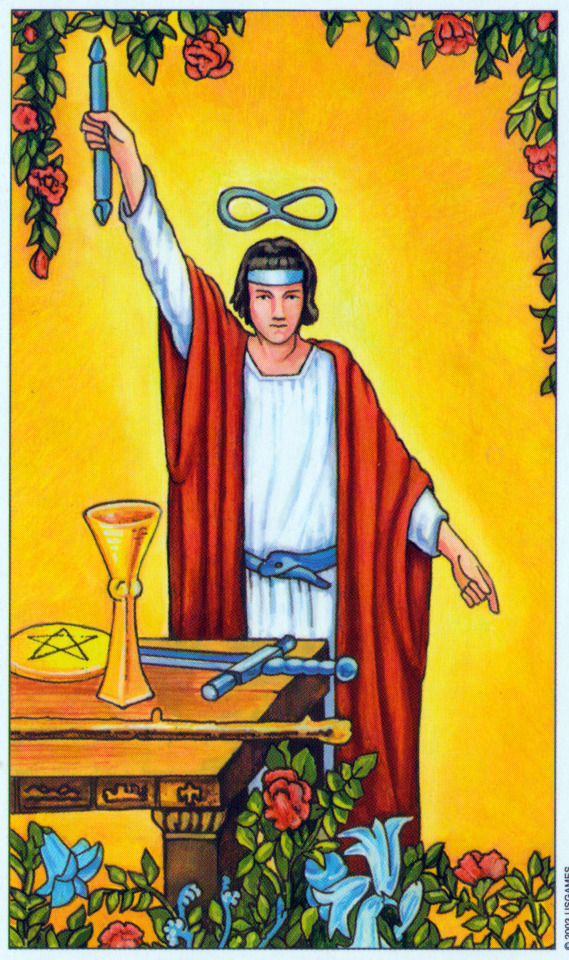
Themes and Keywords: Will. Magic. As above, so below. Words and thoughts with power to bend reality. Words as trickery. Illusion versus change in accordance with will. Knowledge. Skills. Tools. Connection. Transmission. Universal access to all realms. Mind, with all its virtues and flaws. The wand.
Astrology/Element Speedy, tiny Mercury, the closest planet to the sun, has an orbit of only eighty-eight days. It has no moons and flies solo. Because of its proximity to the sun, it rises and sets with it, so it is difficult to see in our night sky. Because its orbit lies inside that of Earth’s, it has phases, but we can never see its full phase as it is always behind or in front of the sun. It’s never more than twenty-eight degrees from the degree of the sun, being either in the same sign or an adjacent one. The sun governs force (Spirit), the positive (masculine) polarity, while the moon rules form (body), the negative (feminine) polarity. But Mercury is androgynous, being the mind or messenger between the two. It’s one of the most important influences on a chart because it tells much about the mind, which creates reality, and describes the intellect and style of communication. It rules messages transmitted and received, travel, motion, magic, the sciences, and logic.
Mercury’s glyph combines the circle of Spirit above the cross of matter and is topped by the crescent of personality (which looks remarkably like a figure wearing a winged cap or transmitting antennae). Mercury has dual rulership over mutable air sign Gemini as its day sign and mutable earth sign Virgo as its night sign. As Gemini, it expresses its quicksilver nature, curiosity, versatility, and wit. As Virgo, it expresses common sense, attention to detail, deep analysis, and logical thought.
Mythology/Alchemy Mercurial gods all bear the creative and compelling power of the logos: the will and word. Hermes (Mercurius) was known as “he of the persuasive tongue.” He wears the talaria (winged sandals that give swiftness) and either the petasos (traveler’s cap) or winged helmet, and he carries the herald’s staff, or caduceus. He is the messenger of the gods, a mischievous trickster, the patron of travelers. Hermes is a friend of those who pursue the occult arts, merchants, thieves, orators, and those in the fields of art and science. In his chthonic form, he takes on the role of psychopomp. Hermes Trismegistus (Thrice Great) is a form of Hermes combined with the Egyptian god Thoth. Thoth ruled in Hermopolis over the Ogdoad (eightfold), a pantheon of eight primordial gods. He was the measurer of time and the scribe of the gods, and he was credited with the inventions of all branches of knowledge, human and divine: astronomy, writing, science, law, mathematics, medicine, and the measurements that established the heavens and Earth. As a scribe, he appears with the head of an ibis. In the underworld, he appears as an ape. His feminine counterpart was Seshet, “she who scrivens”: Mistress of the House of Books, overseer of the royal scribes and library, and dually credited with all of Thoth’s inventions. The “ape of Thoth” trope on the Thoth deck’s Magus is a mercurial reference; here is the ape-as-Magician, complete with the usual wand and analemma. (Prometheus, who stole fire from heaven and gifted it to man, is also a mercurial figure. Other figures cognate are Loki, Ganesha, and Hanuman. It’s usually the Magician, as the Mercury card, where one thinks to find alchemical mercury. In alchemy, mercury represents the spirit (mind), sulfur represents the soul (consciousness, life), and salt represents the body (matter). Because alchemical mercury is spirit and mind, both the Fool and the Magician share this role just as one evolves from the other. Susan T. Chang
5 notes
·
View notes
Text
10 Fascinating Facts about the Moon
About 4.5 billion years ago, when Earth was still very young, something big happened. A huge object, possibly as big as Mars, crashed into Earth. This collision was so powerful that it sent a lot of debris flying into space. Over time, this debris came together and formed what we now call the moon. This event didn't just create the moon; it also changed how Earth developed.
The Moon's Formation
Scientists believe the moon came into being about 4.5 billion years ago, not long after Earth was formed. According to a widely accepted idea called the giant impact hypothesis, a huge object about the size of Mars smashed into early Earth. This colossal collision sent a lot of debris flying into space, eventually forming the moon. This event was significant because it not only gave birth to the moon but also played a big role in shaping how Earth evolved over time.
Why do We Always See the Same Side of Earth?
The moon is really interesting because it spins at the same speed it orbits Earth. This means we always see the same side of it from here. It's like it's locked in place, which scientists call "tidal locking." The side we can't see from Earth is called the "far side" or "dark side." We didn't get to see it until spaceships went there in the 1900s.
Lunar Phases
The moon looks different in the sky as it moves around the Earth each month. Sometimes it appears as a small curve, then it gets bigger until it looks like a full circle, and then it gets smaller again. These changes happen because of how the sun, Earth, and moon are positioned. When the sun shines on different parts of the moon, we see different shapes or phases. Long ago, people used these changes in the moon to know when to plant crops and when certain events would happen. It helped them keep track of time and plan their lives.
Exploring the Origins and Nature of Lunar Maria
The dark, flat spots you see on the moon are called lunar maria, which means "seas" in Latin. But don't let the name fool you—they're not actually filled with water. Instead, they're old volcanic plains that formed a long time ago from volcanic eruptions. These areas look darker because they're made of solidified lava that came from inside the moon.
Understanding the Impact of Space Rocks on the Moon's Surface
The moon's surface is covered in lots of holes called craters. These craters are formed when rocks from space, like meteoroids, asteroids, or comets, crash into the moon. Some of these craters are small, like little dents, while others are huge, like the South Pole-Aitken basin, which is one of the biggest and oldest craters in the whole solar system. Scientists study these craters to learn how often rocks from space hit planets and what happens when they do. It helps us understand more about how planets are affected by these collisions.
How Space Debris and Radiation Shaped the Moon's Regolith
On the moon, there's no protective layer like Earth's atmosphere. So, over billions of years, space debris and radiation have pounded its surface, creating a dusty layer called regolith. Regolith is made up of tiny bits of dust, rocks, and debris from space crashes and weathering.
The Temperature Challenges Faced by Astronauts on the Moon
On the moon, it gets really hot during the day, reaching more than 100 degrees Celsius (212 degrees Fahrenheit). But at night, it gets super cold, dropping to about -173 degrees Celsius (-280 degrees Fahrenheit). This big difference between day and night shows how tough it is for astronauts when they go there.
The Surprising Volcanic History of the Moon
While many people think the moon doesn't have much going on geologically, there's evidence suggesting otherwise. It seems that volcanic activity happened on the moon for billions of years after it formed. This volcanic activity created large areas covered in lava, rounded hills called volcanic domes, and cone-shaped formations known as lunar pyroclastic deposits.
Even though the moon's volcanic activity has slowed down a lot, recent discoveries hint that some volcanic processes might still be happening, just much slower than before. This shows that the moon, despite its quiet appearance, still has some geological surprises up its sleeve.
The Discovery of Water on the Moon and Its Implications for Future Space Exploration
For a long time, scientists thought the moon had no water at all. But now, new research has found that there are actually some water molecules on the moon's surface. This is a big deal because it means we might be able to use that water in the future. It could help astronauts who live on the moon by providing them with water to drink and use for other things. Also, it could be used to make fuel for spacecraft that travel to other places in space. So, finding water on the moon opens up a lot of exciting possibilities for exploring and living in space.
Lunar Mysteries
Even though people have been studying and exploring the moon for a long time, it still keeps scientists curious because there are things we don't fully understand about it. Some of these mysteries include strange patterns on the moon's surface called lunar swirls, temporary changes in its appearance known as transient lunar phenomena, and what the inside of the moon is made of. Scientists are working hard to solve these puzzles because figuring them out will help us know more about the moon's history, what it's like now, and how it fits into the universe.
Conclusion
The moon is a fascinating object in the sky that has been around for a very long time. It's full of interesting stories and is very beautiful to look at. Scientists believe it was formed a really long time ago, just like Earth. The moon has played a big part in how our planet looks and behaves. We've learned a lot about the moon over time, but there's still so much we don't know. That's what makes it so exciting to study facts about the moon! By using science and sending spacecraft to explore it, we're getting closer to understanding its secrets. Each new thing we find out helps us learn more about our closest neighbor in space.
FAQs
What is unique about a moon? The Moon is a special object that orbits around Earth. It's the only natural thing in space that revolves around our planet. It stays about 239,000 miles away from Earth, which is really far. What's interesting is that the Moon and Earth are like best friends in space—they're so close that they're always especially facing each other.
Which is older sun or moon? The Sun is a bit older than us, around 4.6 billion years old according to our best sources. Earth is about 4.54 billion years old. As for the Moon, it's approximately 4.53 billion years old.
Is the Sun 400 times bigger than the Moon? Even though the Sun is much bigger than the Moon, it's also much farther away. Surprisingly, this makes them look almost the same size in the sky. When there's a total solar eclipse, the Moon moves right in front of the Sun and almost completely covers it up.
Is Pluto bigger than the Moon? Pluto is much smaller than Earth's Moon, being only about two-thirds of its size. Scientists think it has a solid center made of rock, covered by a layer of frozen water. The surface of Pluto is coated with icy substances like methane and nitrogen. Because Pluto is not very dense, it's much lighter than Earth's Moon, only about one-sixth of its mass.
#science#space#astronomy#universe#education#moon#lunar eclipse#astrophotography#astrophysics#facts#moon facts
4 notes
·
View notes
Note
The Moon's highest altitude at culmination varies by its lunar phase, or more correctly its orbital position, and time of the year, or more correctly the position of the Earth's axis. The full moon is highest in the sky during winter and lowest during summer (for each hemisphere respectively), with its altitude changing towards dark moon to the opposite.
At the North and South Poles the Moon is 24 hours above the horizon for two weeks every tropical month (about 27.3 days), comparable to the polar day of the tropical year. Zooplankton in the Arctic use moonlight when the Sun is below the horizon for months on end.[200]
The apparent orientation of the Moon depends on its position in the sky and the hemisphere of the Earth from which it is being viewed. In the northern hemisphere it appears upside down compared to the view from the southern hemisphere.[201] Sometimes the "horns" of a crescent moon appear to be pointing more upwards than sideways. This phenomenon is called a wet moon and occurs more frequently in the tropics.[202]
The distance between the Moon and Earth varies from around 356,400 km (221,500 mi) (perigee) to 406,700 km (252,700 mi) (apogee), making the Moon's distance and apparent size fluctuate up to 14%.[203][204] On average the Moon's angular diameter is about 0.52°, roughly the same apparent size as the Sun (see § Eclipses). In addition, a purely psychological effect, known as the Moon illusion, makes the Moon appear larger when close to the horizon.[205]
Rotation
Comparison between the Moon on the left, rotating tidally locked (correct), and with the Moon on the right, without rotation (incorrect)
The tidally locked synchronous rotation of the Moon as it orbits the Earth results in it always keeping nearly the same face turned towards the planet. The side of the Moon that faces Earth is called the near side, and the opposite the far side. The far side is often inaccurately called the "dark side", but it is in fact illuminated as often as the near side: once every 29.5 Earth days. During dark moon to new moon, the near side is dark.[206]
The Moon originally rotated at a faster rate, but early in its history its rotation slowed and became tidally locked in this orientation as a result of frictional effects associated with tidal deformations caused by Earth.[207] With time, the energy of rotation of the Moon on its axis was dissipated as heat, until there was no rotation of the Moon relative to Earth. In 2016, planetary scientists using data collected on the 1998–99 NASA Lunar Prospector mission found two hydrogen-rich areas (most likely former water ice) on opposite sides of the Moon. It is speculated that these patches were the poles of the Moon billions of years ago before it was tidally locked to Earth.[208]
Illumination and phases
See also: Lunar phase, Moonlight, and Halo (optical phenomenon)
The monthly changes in the angle between the direction of sunlight and view from Earth, and the phases of the Moon that result, as viewed from the Northern Hemisphere. The Earth–Moon distance is not to scale.
Half of the Moon's surface is always illuminated by the Sun (except during a lunar eclipse). Earth also reflects light onto the Moon, observable at times as Earthlight when it is reflected back to Earth from areas of the near side of the Moon that are not illuminated by the Sun.
Since the Moon's axial tilt with respect to the ecliptic is 1.5427°, in every draconic year (346.62 days) the Sun moves from being 1.5427° north of the lunar equator to being 1.5427° south of it and then back, just as on Earth the Sun moves from the Tropic of Cancer to the Tropic of Capricorn and back once every tropical year. The poles of the Moon are therefore in the dark for half a draconic year (or with only part of the Sun visible) and then lit for half a draconic year. The amount of sunlight falling on horizontal areas near the poles depends on the altitude angle of the Sun. But these "seasons" have little effect in more equatorial areas.
With the different positions of the Moon, different areas of it are illuminated by the Sun. This illumination of different lunar areas, as viewed from Earth, produces the different lunar phases during the synodic month. The phase is equal to the area of the visible lunar sphere that is illuminated by the Sun. This area or degree of illumination is given by (1 – cos e) / 2 = sin² (e/2) is the elongation (i.e., the angle between Moon, the observer on Earth, and the Sun).
Brightness and apparent size of the Moon changes also due to its elliptic orbit around Earth. At perigee (closest), since the Moon is up to 14% closer to Earth than at apogee (most distant), it subtends a solid angle which is up to 30% larger. Consequently, given the same phase, the Moon's brightness also varies by up to 30% between apogee and perigee.[209] A full (or new) moon at such a position is called a supermoon.[203][204][210]
Observational phenomena
There has been historical controversy over whether observed features on the Moon's surface change over time. Today, many of these claims are thought to be illusory, resulting from observation under different lighting conditions, poor astronomical seeing, or inadequate drawings. However, outgassing does occasionally occur and could be responsible for a minor percentage of the reported lunar transient phenomena. Recently, it has been suggested that a roughly 3 km (1.9 mi) diameter region of the lunar surface was modified by a gas release event about a million years ago.[211][212]
Albedo and color
The changing apparent color of the Moon, filtered by Earth's atmosphere
The Moon has an exceptionally low albedo, giving it a reflectance that is slightly brighter than that of worn asphalt. Despite this, it is the brightest object in the sky after the Sun.[72][j] This is due partly to the brightness enhancement of the opposition surge; the Moon at quarter phase is only one-tenth as bright, rather than half as bright, as at full moon.[213] Additionally, color constancy in the visual system recalibrates the relations between the colors of an object and its surroundings, and because the surrounding sky is comparatively dark, the sunlit Moon is perceived as a bright object. The edges of the full moon seem as bright as the center, without limb darkening, because of the reflective properties of lunar soil, which retroreflects light more towards the Sun than in other directions. The Moon's color depends on the light the Moon reflects, which in turn depends on the Moon's surface and its features, having for example large darker regions. In general, the lunar surface reflects a brown-tinged gray light.[214]
At times, the Moon can appear red or blue. It may appear red during a lunar eclipse, because of the red spectrum of the Sun's light being refracted onto the Moon by Earth's atmosphere. Because of this red color, lunar eclipses are also sometimes called blood moons. The Moon can also seem red when it appears at low angles and through a thick atmosphere.
The Moon may appear blue depending on the presence of certain particles in the air,[214] such as volcanic particles,[215] in which case it can be called a blue moon.
Because the words "red moon" and "blue moon" can also be used to refer to specific full moons of the year, they do not always refer to the presence of red or blue moonlight.
Eclipses
Main articles: Solar eclipse, Lunar eclipse, Solar eclipses on the Moon, and Eclipse cycle
A solar eclipse causes the Sun to be covered, revealing the white corona.
The Moon, tinted reddish, during a lunar eclipse
Eclipses only occur when the Sun, Earth, and Moon are all in a straight line (termed "syzygy"). Solar eclipses occur at new moon, when the Moon is between the Sun and Earth. In contrast, lunar eclipses occur at full moon, when Earth is between the Sun and Moon. The apparent size of the Moon is roughly the same as that of the Sun, with both being viewed at close to one-half a degree wide. The Sun is much larger than the Moon, but it is the vastly greater distance that gives it the same apparent size as the much closer and much smaller Moon from the perspective of Earth. The variations in apparent size, due to the non-circular orbits, are nearly the same as well, though occurring in different cycles. This makes possible both total (with the Moon appearing larger than the Sun) and annular (with the Moon appearing smaller than the Sun) solar eclipses.[216] In a total eclipse, the Moon completely covers the disc of the Sun and the solar corona becomes visible to the naked eye.
Because the distance between the Moon and Earth is very slowly increasing over time,[187] the angular diameter of the Moon is decreasing. As it evolves toward becoming a red giant, the size of the Sun, and its apparent diameter in the sky, are slowly increasing.[k] The combination of these two changes means that hundreds of millions of years ago, the Moon would always completely cover the Sun on solar eclipses, and no annular eclipses were possible. Likewise, hundreds of millions of years in the future, the Moon will no longer cover the Sun completely, and total solar eclipses will not occur.[217]
As the Moon's orbit around Earth is inclined by about 5.145° (5° 9') to the orbit of Earth around the Sun, eclipses do not occur at every full and new moon. For an eclipse to occur, the Moon must be near the intersection of the two orbital planes.[218] The periodicity and recurrence of eclipses of the Sun by the Moon, and of the Moon by Earth, is described by the saros, which has a period of approximately 18 years.[219]
Because the Moon continuously blocks the view of a half-degree-wide circular area of the sky,[l][220] the related phenomenon of occultation occurs when a bright star or planet passes behind the Moon and is occulted: hidden from view. In this way, a solar eclipse is an occultation of the Sun. Because the Moon is comparatively close to Earth, occultations of individual stars are not visible everywhere on the planet, nor at the same time. Because of the precession of the lunar orbit, each year different stars are occulted.[221]
Coronal heating
Main article: Stellar corona
Unsolved problem in astronomy:
Why is the Sun's corona so much hotter than the Sun's surface?
(more unsolved problems in astronomy)
The temperature of the photosphere is approximately 6,000 K, whereas the temperature of the corona reaches 1,000,000–2,000,000 K.[84] The high temperature of the corona shows that it is heated by something other than direct heat conduction from the photosphere.[86]
It is thought that the energy necessary to heat the corona is provided by turbulent motion in the convection zone below the photosphere, and two main mechanisms have been proposed to explain coronal heating.[84] The first is wave heating, in which sound, gravitational or magnetohydrodynamic waves are produced by turbulence in the convection zone.[84] These waves travel upward and dissipate in the corona, depositing their energy in the ambient matter in the form of heat.[122] The other is magnetic heating, in which magnetic energy is continuously built up by photospheric motion and released through magnetic reconnection in the form of large solar flares and myriad similar but smaller events—nanoflares.[123]
Currently, it is unclear whether waves are an efficient heating mechanism. All waves except Alfvén waves have been found to dissipate or refract before reaching the corona.[124] In addition, Alfvén waves do not easily dissipate in the corona. Current research focus has therefore shifted towards flare heating mechanisms.[84]
1 note
·
View note
Text
Let's talk about the Moon...
Let's start off with a bit about the physical characteristics of the Moon...
The Moon is Earth's only natural satellite. This means that it's the only object revolving the Earth that isn't manmade, or placed there by man. The diameter of the Moon is ¼ of Earth's, which is comparable to the width of Australia, making it the fifth largest satellite in the Solar System. When compared to the moon's of other planets, Earth's moon is the largest and most massive relative to its parent planet. It's also larger than all known dwarf planets in our Solar System.
The Moon orbits the Earth at an average distance of 384,400 km (238,900 mi), or about 30x the Earth's diameter. Its gravitational influence is the main driver of Earth's tides and very slowly lengthens Earth's day. The Moon's orbit around Earth has a sidereal period of 27.3 days, and a synodic period of 29.5 days. The amount of the Moon's Earth-facing surface is illuminated by the Sun, and varies from none up to nearly 100% illumination, resulting in the lunar phases that form the basis for the months of a lunar calendar. The moon is tidally locked to Earth, which means that the length of a full rotation of the Moon on its own axis causes the same side to always face Earth.
The most widely accepted origin explanation for the Moon states that it was formed approximately 4.51 billion years ago, not long after Earth's formation. It's said that the Moon formed out of debris from a giant impact between Earth and a hypothesized Mars-sized body called Theia.
The near side of the Moon is marked by dark volcanic maria, which fill the spaces between bright ancient crustal highlands and prominent impact craters. Most of the large impact basins and mare surfaces were in place 3 billion years ago. Although the reflectance of the Moon is low (compared to asphalt), its large angular diameter makes the full moon the brightest celestial object in the night sky. The Moon's apparent size is nearly the same as that of the Sun, allowing it to cover the Sun almost completely during a total solar eclipse.
The usual English proper name for Earth's natural satellite is simply Moon, with a capital M. The noun moon is derived from Old English mona, which stems from Proto-Germanic menon, which in turn comes from Proto-Indo-European mensis "month" which may be related to the verb "measure" (of time). Occasionally the name Luna is used in scientific writing and especially in science fiction to distinguish the Earth's moon from others, while in poetry "Luna" has been used to denote personification of the Moon. Cynthia is another poetic name, although rare, for the Moon personified as a goddess, while Selene is the Greek goddess of the Moon.
Position and Appearance
The Moon's highest altitude at culmination varies by its lunar phase and the time of the year/ The full moon is highest in the sky during winter and lowest during summer (for each hemisphere respectively), with its altitude changing towards dark moon to the opposite.
The apparent orientation of the Moon depends on its position in the sky and the hemisphere of the Earth from which it is being viewed. In the northern hemisphere, it appears upside down compared to the view from the southern hemisphere. Sometimes the "horns" of a crescent moon appear to be pointing more upwards than sideways. This phenomenon is called a wet moon and occurs more frequently in the tropics.
The distance between the Moon and Earth varies from around 356,400 km (221,500 mi) to 405,700 km (252,700 mi), making the Moon's apparent size fluctuate. On average, the Moon's angular diameter is about 0.52 degree, roughly the same apparent size as the Sun. In addition, a purely psychological effect known as the Moon Illusion, makes the moon appear larger when closer to the horizon.
Despite the Moon's tidal locking, the effect of libration makes about 59& of the Moon's surface visible from Earth over the course of one month. The tidally locked synchronous rotation of the Moon as it orbits the Earth results in it always keeping nearly the same face turned towards the planet. The side of the Moon that faces Earth is called the near side, and the opposite the far side. The far side is often inaccurately called the "dark side", but it is in fact illuminated as often as the near side: once every 29.5 Earth days. During the dark moon to new moon, the near side is dark.
The Moon originally rotated at a faster rate, but early in its history, its rotation slowed and became tidally locked in this orientation as a result of frictional effects associated with tidal deformations caused by Earth. With time, the energy of rotation of the Moon on its axis was dissipated as heat, until there was no rotation of the Moon relative to Earth.
Half of the Moon's surface is always illuminated by the Sun (except during a lunar eclipse). Earth also reflects light onto the Moon, observable at times as Earthlight when it is again reflected back to Earth from areas of the near side of the Moon.
Since the Moon's axial tilt with respect to the ecliptic is 1.5427 degrees every draconic year (346.62 days) the Sun moves from being 1.5427 degree north of the lunar equator to being 1.5427 degree south of it and then back. The poles of the Moon are therefore in the dark for half a draconic year and then lit for half a draconic year. The amount of sunlight falling on horizontal areas near the poles depends on the altitude angle of the Sun. But these "seasons" have little effect in more equatorial areas.
With the different positions of the Moon, different areas of it are illuminated by the Sun. This illumination of different lunar areas, as viewed from Earth, produces the different lunar phases during the synodic month. A phase is equal to the area of the visible lunar sphere that is illuminated by the Sun.
There has been historical controversy over whether observed features on the Moon's surface change over time. Today, many of these claims are thought to be illusory, resulting from observation under different lighting conditions, poor astronomical seeing, or inadequate drawings.
The Moon has always been visible of course, but the Ancient Greeks were the first people to begin to understand it. About 450 BC, an Ancient Greek named Anaxagoras realized that the Moon does not shine with its own light. Instead, it's light reflected the Sun.
Another Ancient Greek named Aristarchus (c 310-230 BC) measured the relative distances of the Sun and Moon. He realized the Sun is much further away than the Moon. He also attempted to measure the size of the Moon relative to Earth but overestimated its size. He thought it was about 1/2 the size of Earth, when in fact, it's about 1/4. About 150 BC a Greek named Seleucus of Seleucia realized the Moon causes tides on Earth.
However, no further information about the Moon could be gained until the telescope was invented. Galileo turned his telescope on the Moon.
There's is lots to be studied and learned about the moon, which I will go into in later posts! Thank you for joining me! I'm currently working on a post that focuses on the scientific aspect of the lunar phases, before I delve into the magickal aspects of it.
0 notes
Text
Geography Part I
"...and Nunerion did crown the world with the great bow, Aurcus, so that we might judge the passage of time, and Belerion his son did gift it light." - exert from The Impiriad
Ring World does not receive its light or heat from a sun which it orbits, as ours does, rather it is encircled by a ring, not unlike that of Saturn, but this ring is not made of rock and ice, but a single loop that emits solar-like energy.
What is the ring made of? The inhabitants of Ring World don't know. To them it is made of the element of light, and was placed there by the gods. Their word for the ring is the Aurcus, which comes from an archaic word meaning "light bow", not "light ring", as to them the ring appeared to be a great arch in the sky akin to a rainbow, they had no way of knowing what their astronomers now know
The ring rotates around the planet north-south, whereas the planet itself spins east-west. This means that, at its extremes, the equator is almost always daytime but the poles are mostly night. If you were to stand at the equator, one 24 hour cycle would consist of 4 "days" interspersed with very short "nights." Depending on the position of the ring these "days" are called "parallel days" or "meridian days" which are used similarly to our AM and PM. The further north or south you travel the shorter the days and longer the nights become, until you reach a pole where you only have two short days interrupting almost constant night.
The result, similar to our world, is that the equator is very hot, the poles very cold, and the lands in-between are temperate. Lands in the northern hemisphere are called the Dawnlands and lands in the Southern hemisphere are called the Dusklands. However people and animals haven't evolved similarly as they have in our world, as our equator might also be hot, it does also have long, cooler nights, which don't exist on the ring world.
The output of energy from the Aurcus does not remain constant. Once every four weeks, for a period of about 48 hours, it doesn't "shine" as it usually does, but "glows". During a glow, the world is illuminated by a ghostly pale light, a lot like our world on a clear full moon night. Also, over the course of 13 months, the intensity of output pulses, when it's at its most intense the planet experiences summer, and when it's at its weakest the planet experiences winter. This means it's the same season no matter what hemisphere you are on.
So, by observation of the ring you can tell what time of the day, month and year it is, and so the Aurcus is associated with Nunerion, God of Time. His wife is Sereni, Goddess of Space, who hung the stars in the heavens, by which you can navigate space. Their son, Belerion, is the God of Light, as light comes from both the Aurcus and the Stars. His children, who he had with Elonia the Goddess of Waters, are the various Spirits of Colour, as rainbows come from light and rain. Of course not all cultures believe in this religion, just as not all people in our world believe in Jupiter or Mars but still acknowledge the planets, or they do not believe in Woden or Thor but still acknowledge Wednesday and Thursday, so I mention them here. This is an old religion that belongs to an empire, therefore its influence on many cultures is considerable.
I hope you've enjoyed this introduction to the Ring World. I can't keep calling it that though, it needs a proper name. If you like this project please follow for more and suggest a name. Thanks for reading.
#medievalcore#adventurecore#rangercore#goblincore#world building#fantasy world#fantasy writing#writing#writing project#fantasy#dnd#in the beginning#fake science#new worlds#creative writing#tesblr#imagination
0 notes
Text
The Hidden History of The Symbol of Islam

Official Pyramid Media 369 website: www.pyramidmedia369.com
According to Islam, the "Crescent and the Star'', the crescent phase of the moon is known to represent renewal and progress; as this represents the earliest phase of the moon after the New Moon is complete. This phase represents fertility, as the New Moon is the time to plant seeds, while the Full Moon is the time to reap the harvest of pre-existing seeds. For example: during the Full Moon, the trees soak in all the nutrients from the soil and Earth’s minerals will draw throughout the bark of the tree. This also happens energetically for us as humans. During the Full Moon phase, emotions usually run higher than they would on any other set of days throughout any 4 week cycles.
The star symbolizes the illumination of knowledge and the 'advocate of peace'. ALLAH is a Moon God, historically. Allah also has a feminine counterpart ALLAT. But lets get right into the Star.
The 5-pointed Star, Venus

Venus (ALLAT), the morning and evening star, is the brightest planet in our sky. I had first mistaken this star for Sirius in my earlier studies. I was wrong, however I did find a very interesting connection between the brightest planet and our brightest star. In most cultures, Venus is associated with divine femininity, love, desire, passion, sexuality, harmony, and prosperity. Venus also represents “The Queen of Heaven” aka the Virgin Mary (Virgo) which rules the Taurus bull & the Libra scale of balance and justice (Ma’at). I will go more into the bull here shortly. As you might find, many Venusian goddesses have the same description as the Queen of Heaven. Venus represents the pentagram because of its orbit pattern around the Earth. It seemingly has a push and pull relationship with our planet; as if it plays a huge part in how we experience duality on Earth. See the pattern below. This is sacred geometry on display! It’s saying more than we might know how to think. Venus also represents the Eye of Ra. Venus has a 4 year cycle around the earth, but it appears to us as 8 years due to its unique pattern of coming and going.

How is Venus the Morning Star & Evening Star?
The duality of Venus on earth is due to her placement in the skies when it rises in the east (morning star) and when it sets in the west (evening star). Similar to our Sun, right? As I mentioned earlier, the effects of this pattern may also be similar to how the Moon phases affect us as a collective. In ancient times, the rising and the setting of this star had a pattern effect. I’ve also read that Venus represents the unification of opposites, like attraction. I put these images aside to try to give a good idea of the effects that the luminaries have on us. I am quite sure that the evening star position vs. the morning star position both produce a certain algorithm in our reality we may not be aware of. In the span of time it takes to come full circle of her trajectory (four years), her path traces the outline of the five-pointed star. This gives further fuel to the pentagram as a symbol of harmony, love and perfect union. But always remember there is duality to everything here.
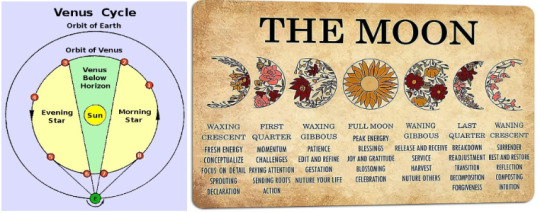
Who is ALLAH (Nannar-Sin)?

Allah, God of the Moon, whose symbol is the Crescent Moon and Bull, God of wisdom and cattle; is also an Annunaki/Sumerian from the Nibiru lineage (Planet X). This is where the word “sin” comes from. It’s not truly the word for a moral abomination as we have learned. In Ancient Sumeria, his name was Nannar-Sin/Nanna-Sin/Naram-Sin; son of Enlil and Ninlil. God Nanna-Sin’s symbol was a bull, essentially representing the horizontal crescent of the waxing moon appearing similar to the horns of that animal. I’ll go into animal symbolism in a different article. But Allah was appointed by Enlil to take over rulership of the Sumerian dynasty on Earth. God Nanna and Goddess Nigal had three children. One of them was Shamash, the God of Sun, truth, justice, and healing. The other children were Inanna, also known as Inanna/Ishtar, the Goddess of planet Venus, and Ereshkigal, the Goddess of the underworld.

The triad Sun-Moon-Venus are respected as the Regulators of time in ancient Babylonia. Allah is referred to as the head of the ancient Mesopotamian pantheon. Know that Mesopotamia and Babylonia both stem from the Sumerian pantheon. Several Moon Gods include: Allah, Nannar-Sin, Thoth, Yah(Iah), Khonsu, Artemis, Tecuciztecatl. Both Tecuciztecatl and Nannar-Sin are considered the “Man in the Moon.”
Who is ALLAT (Venus)?

Allat is known as the triple goddess and divine feminine aspect of Allah. Her symbol is the lion and the crescent moon. She is manifested as a pre-Islamic spirit who was once among the primary deities venerated at Mecca. Allat (goddess of fertility/Moon), Al Uzza (goddess of the morning star/Venus/guardian of the sea, fish & dolphins), and Menat (goddess of fate/ time) are the trinity of goddesses mentioned in the Quran. It is understood that the 3 goddesses represent different facets of one deity; Allat. She is respected as the counterpart of Allah and the judge of the afterlife. Interestingly, Lilith is also referred to as the triple goddess of astrology and is also Sumerian/Annunakian. However, Lilith in astrology represents the dark side of the Moon.

Lilith comes from the word “Lilitu”, who’s ancient story seems to mirror back to the Annunaki goddess, NINMAH, who is the sister-wife of Enki + Daughter of Anu & Namma/Ki/Tiamat, and half sister of Enlil(Lord of the Wind). It was Namma/Ki/Tiamat who came up with the idea to create humans from clay with her son, Enki (Lord of the Earth); who created the Igigi with the help of Homo-sapien DNA. There is not a lot of backstory on Namma, but her daughter, Ninmah is equivalent to the Egyptian goddess, Hathor/Isis, and Aphrodite, Kali Ma, and Lilith, who are also equivalent to the Egyptian Goddess, Sekhmet; all of which are Venusian goddesses. And all possess the symbol of the Eye of Ra, which has a connection to Venus and the star Sirius as well. Ninmah/Ninhursag is known as the first goddess of Venus, also known as the Mother of Venus. I hope this partially shows you the Islamic Moon-Venus connection.
Nannar-Sin’s wife was Ningal, goddess of the spring, fertility, abundance, and the Lady of Dreams. I have not found that she has any connection to Venus or Moon as her own deity, but her energetic signature surely ensues she had her own power.
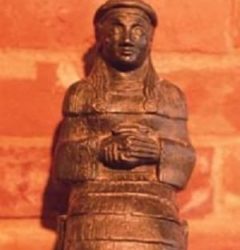


Venus also represents Death and Resurrection in the ancient Mayan tradition
“They believed that the night sky contained messages that could guide one’s life and decisions on Earth. This was much more useful than discovering a heliocentric theory.”
Venus Cycles, Signs in the Sky
“Indeed, the patterns in the night sky seemed to cry out, “Decipher me! This is no coincidence! There is deep meaning in the stuff up here!” For example, Mesoamerican mathematicians realized that 5 x 584 = 8 x 365. This begged the question: “What does this mean!?” So, 8 Venus cycles equaled 5 Earth years. It had to mean something. The night sky was revelatory and this 8 to 5 ratio might not be immediately understood, but it was a piece of the overall puzzle to be kept for the day when it could be placed meaningfully into the greater picture.
The information derived from the night sky and other information used in magical predictions was arithmetical and numerological to the Mesoamericans. There was, for instance, a Sacred Round of 260 days. Nobody, anymore, is sure where they got this from – maybe the period of time for human gestation.
It became a type of mathematical constant, however. 2 x 260 = 520, which equals, for instance, three lunar half years. The Dresden Codex, from which we learn of the importance of the planet Venus in the lives of the power elite in Mesoamerica, was a book of divination with the stations of the Venus cycle as important aspects of when, for example, war would or should occur.”
Death and Resurrection
“To believe that union must emerge from divorce, mercy must emerge from revenge, kindness from callousness, patience from petulance, joy from despair, love from hatred, brotherhood from antagonism is to realize a meaning in the Ancient Star’s journey. To be able to pick Venus out of the sky, and understand that it can be a symbol of death and resurrection, of adversity and hope, is an extraordinarily powerful aesthetic experience.”
Source for indented paragraph quotes above: “Venus also represents Death and Resurrection in the ancient Mayan Tradition” (LINK)
Nibiru, Orion’s Belt & Sirius Star System
I caught myself asking, “how is Venus and Sirius associated with each other?” Going far back in ancient history, I have found that just about all Mother Goddesses are Venusian goddesses but the eldest Mother Goddesses are symbolic to both Venus and Sirius. Ironically, Sirius is the brightest star and Venus is the brightest planet. There is an obvious connection between those two planes and Earth. It is said that Annunaki's native planet, Nibiru/Planet X was shifted out of Sirius’s orbit and took on a new orbital motion. The Annunaki are beings of a higher density. So they had to use Orion’s Belt as a portal to travel here from Sirius, their place of origin.
youtube
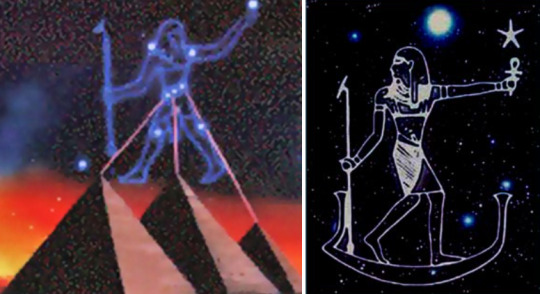

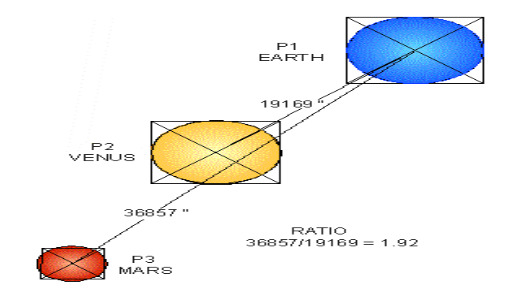

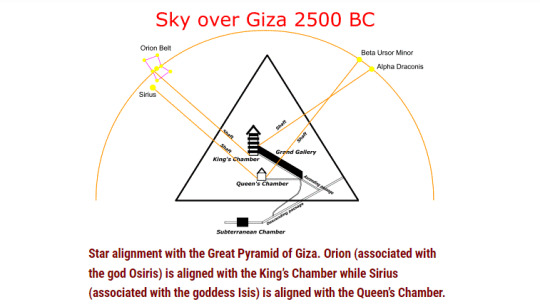

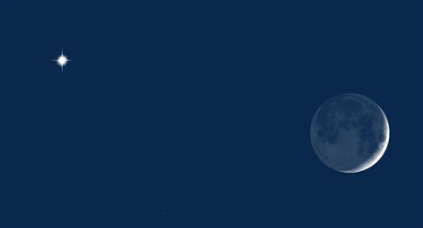
Additional Links:
Christ, Pisces & The Mother Goddess (Dogon Moon Goddess, Yemaya, Nommo of Sirius)
IXCHEL, the Mayan Moon Goddess (Mesoamerican Moon Goddess, Venus/Frigg, Dreamworks Logo)
Earth’s Twin Flame? Fun facts about Venus! (Parallel Universe, Sevan Bomar, Aphrodite/Inanna)
Thank you for reading!

#Venus#Sirius#Mother Goddess#Astrology#Greek#Mythology#Egypt#ancient sumeria#Sumer#annunaki#mesoamerica#pyramidmedia#369media#Yemaya#Ixchel#Moon#Moon Goddess#Allah#Islam#Allat#Ninmah#Enki#Enlil#Thoth#Babylonia#God#Orion#Orions Belt#Astronomy#Constellation
31 notes
·
View notes
Text
Ruidus Astronomy
Inspired to do so by this post; making my own post so as to not do weird things to other people's notes should I wish to respond to questions.
What we know from the current episode: Ruidus does not have phases (ie, doesn't wax or wane), and is visible for half the Exandrian year. It also sometimes flashes.
These two things are incompatible if we assume Ruidus's light works the same way as our (Earth's) moon or Catha presumably does, ie, as reflection of sunlight; the flashing is definitely weird. Therefore, we can determine Ruidus's light source is not reflection from the sun:
Visibility for only half the Exandrian year implies one of two possible orbits. One is an orbit slightly off from a true geosynchronous orbit (geosynchronous=in sync with Earth. In this case it would be an orbit that is very close to the length of the Exandrian 24-hour day, but not exactly the same). In that case it would be almost but not quite synced up with the planet's rotation and therefore would appear to move very slowly across the sky over the course of the year, relative to people on the planet. In this case, it is truly not visible to those on the opposite side of the planet, not even during the day. It would only appear to rise and set once per year; basically it makes its way across the sky bit by bit over the course of half the year, and then is not visible from that point for the other half of the year.
Alternately, it could have an orbit that is the same length as the Exandrian calendar year. This means it's technically up there in the sky during the day, since the planet makes a full rotation each day and Ruidus is, with this slow orbit, relatively stationary compared to the rotation of the planet; but it would be only visible at night for about half the year for most latitudes (tbh I do not have it in me to figure out the details about polar latitudes. Also the Nein were in Eiselcross in summer and it still had night so I'm going to say we do not have the required information re: the tilt of Exandria nor the precise latitudes involved).
Episode 2x76 actually already confirmed that the latter case, where Ruidus orbits Exandria once an Exandrian year, is indeed true. Note that during the half of the year when Ruidus is considered not visible, it technically is there in the sky; it's just that it's above during daylight hours. Per the Explorer's Guide to Wildemount, page 9, it is "nearly impossible" to see Ruidus during the day.
Also, note that in both cases Ruidus is always visible at night to someone; it's just not always visible at night in a certain part of the planet. Presumably this is how the scholars of Exandria determined the orbital length; someone in eastern Wildemount, for example, would have different dates of visibility for Ruidus than someone on the other side of the world in Issylra, and then they could also try to see Ruidus during the day to verify which scenario was true.
However, in either of these cases, the position of Ruidus relative to the position of Exandria and the sun changes which means that if its light source were the sun, it would appear to wax and wane, albeit at very different rates than Catha.
To not have phases while reflecting the light of the sun, Ruidus would effectively need to be not a satellite of Exandria, but rather a planet with the same length year as Exandria, in an orbit slightly further from the sun. For an illustration of moon phases see the below image, credit Karl Tate/space.com:

As seen, a full moon occurs when the planet is between the sun and the moon. Therefore, for Ruidus to always be full it would need to always be on the outer side of Exandria relative to the sun. However, in that case, it does not orbit Exandria; it orbits the sun (and the 'only visible for half the year' thing falls apart as well).
Therefore, the source of Ruidus's light must be an internal one, such that its relative position has no impact on the light it gives off. The source of the glow and flashing is unknown.
293 notes
·
View notes
Text
Demigod MC Series: Nyx
Nyx is a primordial goddess and the Greek personification of Night - the mother of Hypnos, Thanatos, Nemesis, and many more. She's a mysterious figure in their mythos as there's little surviving info about her cult. What is known, however, is that she was portrayed as beautiful, powerful, and feared by Zeus himself.
Demigod MC Series: Intro, Aphrodite, Hermes, Hades, Dionysus, Demeter, Athena, Hades Pt. 2, Poseidon, Ares, Hestia, Nyx
Lucifer
What happens when you take a being born from the darkness and place them in a realm of eternal night…?
The answer came when the MC first stepped out of the portal. Everyone in the room was wholly expecting a normal-looking, confused human they could get up to speed, however…
The MC's skin suddenly darkened until it was as black as a shadow, their clothes levitated around them as if they were defying gravity, and glimmering speckles dotted their skin like twinkling stars.
Even their eyes turned a pure, glowing white without irises or pupils… Like two crowning stars locked into a body made from the shimmering night sky...
They weren't human. At the time, Lucifer wasn't even sure he could say what they were... Breathtaking, certainly, but there was something else about them that he couldn't place… something… foreboding...
Diavolo must have had the same unease because Barbatos was put in charge of monitoring them. The butler would send reports to them both and the results would range from benign to nerve-racking...
They kept their distance from his brothers and most people, but their power seemed immense... Barbs would report seeing them making small items float or summoning a meteor shower from their fingertips!
Lucifer ended up actually tasting their powers only once. When they stepped in to protect Beel and Luke and he went to attack them…
The whole House began to shake and the candles of the tomb started going out one by one as the air grew intolerably heavy... He could have sworn he saw a vortex of… something... swirling at their feet...
He backed off immediately and Beel and Luke got off with a warning, mostly because he was trying not to look utterly petrified...
He's never met a more beautiful and dangerous creature in his life… Pact mark or no, this is probably the only person the firstborn will admit he never wants to have to fight because he'd lose, big time.
Mammon
He was expecting to find a human when he walked into the Student Council room, not an alien!!
Mammon was seriously scared of the MC when they first met because he legitimately believed they were an extraterrestrial sent to probe him!!... Or whatever else those scary movies say aliens do, lay eggs in his stomach?
He straight up avoided them like the plague until the Goldie incident more or less bound them together. But even then there was a distance between them he just couldn't place…
Naturally, it bothers a demon a bit if their master doesn't seem to like them, so he eventually cornered them one day to force them to tell him why they'd been running off!
As it turned out, the MC actually knew as little about their new form everybody else! They had been perfectly normal in the human world, but for some reason the Devildom supercharged them! They could tell that they were powerful, but had no idea how to control themselves yet and it scared them...
So Mammon became their first unofficial "coach." Not that he knew how to train them or anything, but he was the first person supportive enough to even try to help them learn their new powers.
It led to some… interesting misadventures. Like when the MC unexpectedly burst every water pipe in the House or when they got a little too frustrated and ripped the kitchen apart with an accidental twister, but hey, Mammon was always there for them at least.
Of course, because he's who he is, he's not above asking the MC to help him with his schemes for "training purposes…" Infiltration is more fun if you're weightless, after all!
Speaking of weightless… His favorite way to float is when the MC gets excited and hugs him. They can't help but levitate them both off the ground when they're that happy and it makes the whole hug that much sweeter.
Leviathan
It's… it's like he's in his very own Magical Girl anime!!! Uh, "I'm a Demon and this is My New Life with a Magic Starchild!!"-or something like that. 🤷♀️
He didn't even think their transformation was real when he first saw it! He really thought it was an elaborate body art cosplay but then their "freckles" rearranged themselves when he frightened them, so it had to be real!!
He'll declare that they're probably (literally) the coolest thing on the planet. They have the looks of an epic fantasy character plus insane powers to boot!
…though uh… they may need a training arc or two to learn how to control them… 😅
Since their powers are apparently tied to their emotions, Levi's seen them do a whole bunch of stuff that's not entirely on purpose... Like, they can make things float when they're happy and push everything down when they're sad.
So once he showed them one of those "tragic ending" animes for fun, but they cried so hard that they increased gravity and accidentally sent his bathtub crashing into the basement…
The worst of it is when they're mad, though. He made the mistake of making them play a rage game once and they ended up shattering all the glass in his room! His aquarium wall and Henry's fishtank included!!
They were able to make a zero G sphere of water in order to save Henry's life, but the cleanup was brutal… They were super sorry, but Levi took most of the blame himself anyway.
Honestly, he'd have been more mad but their body is clearly not something they can control just yet. Plus, it's so cool that he can put up with a little destruction anyway, you know?
Satan
Well, isn't that an interesting phenomenon?
Meeting a demigod is exciting enough, but one who reacted to the Devildom like that? It was pretty much unheard of!
Though he'd hate to admit it, Satan stalked the MC just as closely as Barbatos for a little while... But only because he was a little unsure of how to approach them…
They kept to themselves and their powers seemed "a little" unpredictable (see Levi's orphaned bathtub). Thankfully, Mammon ended up recommending the MC to him since Satan's one of the smartest guys around.
Satan made a better coach than Mammon, anyway. He was far more knowledgeable and actually able to hypothesize the strength their powers, which came in handy because uh… well…
Look. The whole realm 'ooohs' and 'ahhhs' over their appearance but they're all fools - no morons - for not noticing what potential the MC actually has. Satan was positive that the MC is the most powerful being in the Devildom, without question.
They had a complete control over gravity, atmospheric pressure, and even astronomical bodies… If they wanted to, they could literally pluck a planet out of orbit and send it careening into who knows what!
Want more terrifying? They could create near-matterless vacuums at the palms of their hands with the potential to suffocate, crush, or rip apart basically anything they wanted with implosive force….
Does he even need to spell out why that's utterly horrifying??
At least the MC seemed to be a genuinely nice person who wanted to control their powers better… Their emotions often got in the way but they tried their best.
He likes the MC a lot, but he'd be lying if he said that they didn’t also terrify him… They may have been pretty normal in the human world, but give them endless night and they may as well be a god...
Asmodeus
Oh… My… Father!!! They're GORGEOUS!!!!
From the moment their transformation completed, Asmo had never seen anything like them! He said that they were like a living droplet of the night sky!
They were magnificent!! They were radiant!!! He was posting pictures of them before they had even said their first sentence!!
So Asmo was pretty much patient zero for any and all rumors and hype about the MC after that... Apparently someone like them only visits the Devildom every one, maybe two, centuries so everybody was bound to get talking.
Thankfully, the MC's habit of ducking out of the House kept them from becoming a full on sideshow. Unfortunately, however, Asmodeus was relentless!
He'd beg them to try modeling or make videos with him because of their unique look! He'd lay on the praises, but it was a little... much. It wasn't until Mammon finally stepped that he backed off a bit.
Asmo sometimes forgets that not everyone puts as much emphasis on looks as he does... Though he meant well, he hadn't realized that the MC maybe wouldn't appreciate him making such a big deal out of their appearance change. Pretty as it was, it was still involuntary to them...
Of course, after they told him this he cooled off and stopped putting them out there so publicly but even still he could hardly keep his eyes off of them... unless he was looking in a mirror, of course. 😘
A fun fact about the MC: when they blush, their skin makes a pink nebula. And thanks to his antics, Asmo has seen their lively pink cheeks many, many times… 🤭
Beelzebub
Belphie would like them, wouldn't he...?
Beel's first reaction upon seeing the MC was genuine sadness, as seeing the stars with his twin brother still gone often brought him…
The sadness didn't last too long at least because Beel tried his best to see the MC more like a person than a work of art or an oddity. Sure, they looked different - like really different - but they still laughed, cried, and ate like everybody else so they couldn't be that different.
Though then again, most people don't end up floating in midair when they laugh… Eh, oh well. It's not like those little details bother him. 🤷♀️
He always remained certain that Belphie would like the MC so he told them a lot about him. Since his twin loved stargazing, it'd only be natural that he'd like someone who looked like the stars, right?
Aside from the occasional tangent about his brother, Beel would also help the MC with their training by letting them help him with his training!
Controlling gravity can be pretty nifty for strength/resistance exercises, so there would be days where Beel would just pull a Dragon Ball and walk around at 1.5 or 2 times Earth's gravity thanks to having the MC on his back!
Sure, lifting a glass of milk becane so difficult that he literally broke a sweat from trying, but he felt like he can juggle motorcycles afterwards so who's complaining? Not him!
Belphegor
……
………….
Was it some kind of joke?
The MC was not human. There was no way in heaven or hell that whatever he lured to the attic was supposed to be a human!!
Really, everything about the MC and their situation seemed directly designed to throw a monkey wrench into his plans...
One: They weren't human so how was he supposed to ruin Diavolo's dream? Two: They were clearly some kind of magical being so they could likely defend themselves…
But third ans most embarrassing of all... he honestly, genuinely, has never seen a more amazing person in his life. Blame it on his soft spot for the stars, but the moment the MC step up to his prison bars, he was smitten...
And. He. HATED IT!
Look, as much as he loved the night sky, he wasn't about to let some random non-human derail his anger! He was stronger than that!
He managed to hold onto his bitterness just long enough to make a halfhearted attempt on their life after they got the door open, but uh…
His brothers found Belphie when he fell through a newly-made hole in the ceiling... Said hole was made when his body slammed to the ground hard enough to crash through the attic floor... 😣
If the damage they caused wasn't enough to change his mind (which it was), then their distress when they thought they might have hurt him certainly did. Even their tears looked like stardust...
After far too long, Belphie got over his denial and began to properly love MC. If he liked stargazing before, he adored it now because he never even has to get out of bed! He can just roll over and follow the "stars" on the MC's body!
Unfortunately, that same love means it also takes a lot to ditch him if they get sick of being his personal night's sky… The brothers have found him floated up and sleeping on the ceiling on numerous occasions so the mortal can get some fresh air (clever MC)...
#obey me#obey me shall we date#shall-we-date-obey-me#obey me lucifer#obey me mammon#obey me leviathan#obey me satan#obey me asmodeus#obey me beelzebub#obey me belphegor#obey me headcanons#obey me demigods
1K notes
·
View notes
Note
I just read the summary of "The Science of the Spherus Magna System" (fantastic work btw) and now I'm wondering what the sky would look like on Bara Magna, how big the moons would be, and the same for Aqua Magna. Have any insights there?
Excellent question!
As described in my Science of Spherus Magna document, both Aqua Magna and Bota Magna are in a stationary orbit around Bara Magna, meaning that they complete one orbit in the same time as it takes Bara Magna to spin around once on its axis (one day). Therefore, from the ground the moons would appear to hang unmoving in the sky, going through a full set of phases through the course of the 36-hour day. Due to their positions on opposite sides of their orbit from one another, you would never be able to see both moons at the same time from a position on the ground of Bara Magna, as one would always be on the opposite side of the planet. But to work out the apparent size the moons would appear in the sky, we will need to do some more mathematics.
Here on Earth, astronomers use something called angular measure to describe the apparent size of an object in the sky. The whole sky is divided up into 360 degrees, however as the ground technically blocks half the sky from view, therefore from horizon to horizon is measured as 180 degrees. One degree is further divided into 60 arc-minutes (or 60’ for short) with an arc-minute being further broken down into 60 arc-seconds (or 60”).
To work out the angular size of an object in the sky (measured in arc-seconds), you need to know two things:
The linear size of the object (this is another way of saying its true size, measured in meters)
The distance to the object (again, measured in meters)
If you know those two things, you can plug them into this equation to find out the angular size of the object in question:

Let’s say we have an Agori looking up at the sky from the equator of Bara Magna, on the side of the planet that is facing Aqua Magna. What would they see?
From my previous investigations, we know that the linear size of Aqua Magna is its diameter measurement, which is equal to 7,220.47km (or 7,220,470 meters). We also know that the distance between Aqua Magna and Bara Magna is 87,548.16km. However, this measure is from the centre of Bara Magna to the centre of Aqua Magna, so for the purposes of this investigation we will need to remove the radius of Bara Magna from that so that the measure is starting from its surface, where our Agori observer is. The radius of Bara Magna is 10,830.70km, so taking that away from the distance measure gives us a distance from the surface of Bara Magna to Aqua Magna of 76,717.46km (or 76,717,460 meters).
Plugging both of those numbers into the equation above gives us an angular size of Aqua Magna for our Agori observer of 19413.19 arc-seconds, or 5.39 degrees. Given the symmetry of Aqua Magna and Bota Magna in their orbits, this is also the size of Bota Magna that the Agori would see if they travelled to the other side of the planet where Bota Magna is visible.
To put that into context, from the surface of the Earth, our Moon has an angular size of around 0.5 degrees, so to our Agori astronomer, Aqua Magna would appear to be 10.78 times larger than the Moon appears in the sky here on Earth – like this:

Given that I stated that Aqua Magna was tidally locked to Bara Magna, meaning that only one side of the moon ever faces the planet (the same as how only one side of our Moon ever faces the Earth), there would be no land on the side facing the planet to be able to see it, as I assumed that the GSR landed on the side facing away as an explanation of why the Matoran of Mata-Nui and Voya-Nui never mentioned seeing the planet when they looked to the sky. But let’s say that a very adventurous Ga-Matoran set away on a quest to circumnavigate Aqua Magna – how big would Bara Magna appear in the sky to her once she sailed to the other side of the moon?
The diameter of Bara Magna is 21,661.40km (or 21,661,400 meters) and the distance from the surface of Aqua Magna to Bara Magna is 83,937.93km (or 83,937,930 meters). Plugging those numbers into the equation again, we get an angular size for Bara Magna when viewed from Aqua Magna of 53,229.67 arc-seconds, or 14.79 degrees.
Comparing that size to our Moon again, to our Ga-Matoran sailor Bara Magna would appear to be 29.58 times larger than the Moon appears to human astronomers – like the below image:

While you didn’t ask it in your question, I also worked out the apparent size of the Red Star when viewed from the surface of Aqua Magna. Its diameter is 350km (or 350,000 meters) and its distance from the surface of Aqua Magna is 17,149.73km (or 17,149,730 meters), meaning its angular size would be 4,209.56 arc-seconds, or 1.17 degrees, which is 2.34 times larger than the Moon appears to us – see the below comparison again:

One thing I forgot to mention in my Science of Spherus Magna paper was that given the Red Star is also in a stationary orbit around Aqua Magna, it would act much in the same way as a full Moon here does at night on Earth for the side of Aqua Magna facing it, only appearing larger in the sky than our Moon does. Nocturnal Rahi on the islands of Mata-Nui and Voya-Nui would be able to use its light during the night to see by, though because it produces its own light of a specific colour, everything would be bathed in a deep red glow.
#answered asks#bionicle#bionicle science#Aqua Magna#Bota Magna#Bara Magna#Science#astronomy#lego#if anyone else has any questions they want answered#send me an ask
25 notes
·
View notes
Text
The Light of Jupiter
Short thing! Based on something I did tonight with my husband. It’s been too long since I wrote for Avior. I need him 1.1k words
—
“Avior!” I shouted, hurling open the apartment door and running in.
Avior appeared through a rift in front of me. “Starlight! What’s wrong?!” he demanded. “Wait—not fear—that’s excitement—”
“Nothing!” I held my phone in front of his face, showing my Sky Guide app that showed me the stars and constellations and space news. “Look! Jupiter is the closest to Earth it’s been in fifty years, and is the closest it’ll be for like a hundred and forty. It’s gonna be so bright tonight! We have to go out and look!” I scrambled to find his hand. “C’mon!”
Avior followed me, looking a bit confused, as I dragged him out of the apartment, down the stairs, and into my car. He slid into the passenger seat and just watched me as I rushed into the driver’s side.
Once the car was started, we left the parking lot and I drove us up the hill a ways to a spot where the sky was clearer, but there were still houses, so the woods couldn’t block too many of the stars. I got out, dragged Avior out, and then yanked my phone out of my pocket. Jupiter was supposed to be the brightest object in the sky tonight, but I wanted to make sure I wasn’t accidentally looking at Venus instead.
I spun in a circle with my Sky Guide’s Augmented Reality Map filter turned on so I could see the label appear close to where the celestial objects actually were.
“There!” I announced, pointing.
Avior followed my line of sight. “Pretty,” he said. “Why doesn’t it twinkle?”
“Planets don’t. They’re close enough to have defined space in the night sky, so the atmospheric disturbances that make stars twinkle don’t affect them.”
Avior smiled with a slight huff of amusement out his nose. “You always know so much about the stars,” he said gently.
I smiled, eyes trained on the sky. “I’ve loved the stars longer than I’ve loved almost anything. Even you. But the feeling is the same in my chest when I see the sky like this tonight, and when you’re the one shining above me.”
He looked away from the sky to look down at me. “You’re too kind, starlight.”
I shook my head. “Just telling the truth.”
Avior paused for a moment and snapped his fingers. A telescope appeared in front of us. “This should help, right?”
I immediately started using the viewfinder to position the main telescope. “Yes! I mean, supposedly tonight even binoculars can pick up the bands and three, maybe four of the Galilean moons.”
“The what?”
“The four moons Galileo discovered orbiting Jupiter. Strong evidence that the Earth was not the center of the universe with every celestial body orbiting us as most people believed at the time.” I’d found Jupiter while I talked and peered down the eyepiece. The bands and the moons, just as the app said. “Wooow! That’s beautiful! Look!” I leaned back and cleared the way for Avior to bend over and take a turn.
“Incredible,” he said. “Your starry skies remind me of Aria.” He peeked over his shoulder at me. “And they remind me of you. Both of my homes.”
“I love you, Avior,” I said.
“I love you too.” He leaned up and wrapped his arms around me. I looked out from under his chin up toward the sky to keep my eye on Jupiter.
At that moment, laughter rung through the trees and another couple came running up the path to where we were standing, holding hands. I turned to take them in. One was a demon—I could tell by the power of his aura—the other was a Freelancer, like me.
“Oops! Gav, I think this spot’s taken,” the Freelancer whispered.
“Nonsense,” Avior said. “You’re just as welcome to share this space as any would be. Hello Gavin.”
“Hi Avior.”
“You two know each other?” Gavin’s partner asked.
“There aren’t really a whole lot of demons. We tend to be at least acquainted,” Avior explained. “Especially if we frequent the same human cities.”
“Oh. Cool. We just came up here to look at Jupiter,” the Freelancer said, showing a similar app to mine on their phone.
Avior and I stepped away from the telescope. I gestured to it. “Go ahead and have a look, Freelancer,” I said.
They grinned at me. “Thank you—Freelancer.”
We both chuckled, though I wasn’t entirely sure what the joke was.
Avior rolled his eyes fondly.
The Freelancer and demon each took a turn looking through the telescope, the Freelancer bouncing and talking excitedly and Gavin mirroring their enthusiasm, asking questions as they went off talking about how the bands of Jupiter formed.
After a bit, they drifted away, back into the darkness. Avior and I looked through the telescope again.
My phone gave a brief buzz in my hand. “Oh hey! The ISS is going to reach its peak soon. We should be able to see it if we get past these trees, I said, using the compass to find where it was going to clear the horizon.
“Well come on then,” Avior said. A snap of his fingers scattered the telescope into smoke, and he started walking swiftly down the sidewalk, pulling me like he wanted to run.
“Hang on.” I kicked off my sandals and picked them up in one hand, holding them and my phone, Avior’s hand in my other.
We took off running down the sidewalk. Avior was smiling in the intermittent light from streetlamps.
We made it past the stand of trees. Jupiter was still somewhat visible between the leaves, but the small moving dot of light that was the International Space Station was traveling quickly through the inky blue of the sky.
We watched it reach the zenith of its arc and start its descent back below the horizon.
Avior wrapped his arms around me again as it disappeared from sight. “Thanks for this, my love,” he said softly. “I’m glad I got to enjoy this small adventure with you.”
“Thank you,” I corrected. “For indulging your space nerd.”
He leaned down. “You’re more than that. You’re my starlight.”
His lips met mine.
We kissed under the strong light of Jupiter before heading back to the car to drive home. Our home. Together.
#Redacted Audio#fic#Redacted Avior#Redacted Starlight#Avior#Starlight#Redacted Gavin#Redacted Freelancer#Gavin#Freelancer#Starlit Fic
14 notes
·
View notes
Text
Stars
Dannymay, 12,021 Human Era
Danny floated lazily on his back, a bag full of white and grey rocks orbiting him while he admired the lunar surface. It was going to be hard for anything short of crafting the rocks into something to top Wulf’s teachings letting him portal up to the moon whenever he wanted, barely tethered by its weak gravity and able to traverse it without disturbing the dust unless he picked up a rock. From his vantage point, the stars above and about were uncountable, and if he didn’t know better he’d say there was no end to them. His appearance had changed, even, from the silk-lined, spike studded, leather jacket that Sam and Tuck all but shoved onto him when it became clear that he’d be fighting ghosts regularly to a suit resembling the uniforms of NASA astronauts, black, white, green, and covered in silver stars.
Grinning to himself, Danny took off toward the Oceanus Procellarum, a camera he and Tuck had built recording the longest video he’d ever taken when a chill that dwarfed the cold of space ran down his spine and rose from his lungs and throat to his lips, blue vapor drifting in front of his face. There was a ghost, on the moon, and the idea of a hostile ghost following him up to space was so beyond aggravating that Danny’s hair ignited, his fangs sharp, the knuckles of his gloves sharpening into hardpoints, and his aura flaring up like a beacon of green and blue. Opening a portal to deposit his bag of moon rocks in his closet, Danny launched himself where he felt the other ghost’s presence, the logic that a ghost whose aura he couldn’t see but still feel on the moon’s surface, in one of her craters even, abandoned at the moment. That thought process is, of course, slammed into him the moment Danny sees exactly what it is that he’s sensed.
Their body was a slowly slithering mass of the purest darkness that could not be called something so bright as black, with violets and blues and colors that could not be seen, only experienced, dancing within them like ink within water, blue and red and green stars twinkling between the stretches of void, moving fast enough for Danny to know there even was movement of them, but slow enough to be mesmerized by the sight of it. Their face was a theatrical mask, bone white with red behind the eyes and a curve of a smile to mark the mouth, and from the void behind the mask curled horns of dark and beautiful amethyst and sapphire and onyx, somehow occupying the same space and curving in every which way. It was, frankly, impossible to make out all the details or to measure quite how massive the form of Nocturne was as he relaxed upon the surface of the moon’s ocean of storms. In all his conflicts, no ghost had ever made him feel quite so small simply by laying back, impossibly huge.
“My, my, ” he said, voice coming from the back of Danny’s head rather than the lack of air around him, even if their lips still moved to shape the words. “ Is that Danny Phantom in the flesh, not simply dreaming so big that you’ve learned to astral project without my guidance? Have you decided to make your fantasy reality and join me here?” They lifted part of their body and when Danny focused he saw the silhouette of a hand.
Danny had many questions, but the first one that came out of his gawking mouth as he rose to meet the giant’s face was, ”How did you get so big? Been munching on the muses of artists? Oh stars, are artistic muses actual spirits? Can you eat them?” While Danny usually appreciated a good laugh, that was when he said something as a joke, not asked a very good question. Nocturne’s laughter swept over him like a tidal wave of endearment and amusement.
“Ah, that’s right, you met me through a smaller emanation, didn’t you? I assure you, child, I’ve been this size for ages. Also, I do not consume muses, though whether that is because they do not exist in such a form that I could or because that would be an unsustainable form of sustenance, I shall leave you to consider. While the dreams of artists like you are rather vivid, the occasional idealist and average joe is good for diversity in palette. After all, each mind has such capacity for imaginative dreams.”
“Emanation?”
“A thin slice of myself sent down to help you sleep at my brother’s request. ” Danny scratched his head at that and Nocturne laughed again. “ The little game of hero and villain was delightful fun, though… you didn’t think that the ghost Master of Dreams needed helmets and machinery to harvest the energy of good dreams, did you?” Danny folded his arms with a pout that Nocturne couldn’t possibly have been able to make out when he was so small comparatively, and yet they chuckled anyway, shifting into what Danny was going to call a sitting position.
“So you aren’t going to leave everyone asleep forever?”
They frowned. “Of course not, you can’t dream forever. It isn’t healthy and leads to stagnation and, eugh, nightmares. Those the Fright Knight can have, whensoever he gets himself free from his imprisonment. ” Danny sighed, relaxing all over, and did his best not to flinch when Nocturne scooped him up in a claw talon tendril wing fin hand. “ Come to listen?”
Danny looked around and spread his arms slowly. “In the silent vacuum of space? To what?”
“My dear boy, can you not hear the star song? ” Nocturne tilted his head and their eyes locked for a long, headache inducing minute. “ No one has taught you how to percieve the spaces that layer upon themselves to form the world you know, have they?”
“I don’t know what you’re talking about but I do have a headcahe now, so that’s great. What, the world is like origami and everything is singing underneath the top layer?”
“An apt comparison, yes, ” Nocturne said. “ Your liminal state of being considered, perhaps it would be simpler to show you, than to make you work your way through new senses. After all, what’s a dream without a bit of fantastical ease?”
Danny flew back a few paces, though he was still in Nocturne’s palm. “Is it safe for you to do that? I don’t wanna go forgetting how to be a living human being just to hear a song.” Nocturne huffed, puffing up like a bird in mild offense.
“Child, the mind is my domain, I know perfectly well what I am doing. You are not the first liminal whose mind I have touched, nor I imagine shall you be the last. But, if you do not care to hear the song that the earth, the moon and the stars sing…”
“I never said I don’t! I just, wanted to be sure.” Danny rubbed the back of his head before floating a bit higher. “Alright, alright what do I do?”
“Relax, little one. Imagine a door, it can be any door you like, between your mind and those minds around you. ” Danny closed his eyes, taking a superfluous breath that came up empty, his body relaxing slowly with each breath. He pictured a door, a hexagonal door to a space station. “ Very good, ” Nocturne said, and Danny felt his chest puff up with something like pride before he felt and heard a knock knock on the door in his mind. “ Now all you have to do is let me in.”
There was a moment where in Danny considered simply not letting Nocturne into his mind. After all, Danny would probably figure this out himself if he tried. It was a tempting idea, probably even the smartest idea when dealing with a being who had attacked him, even if they claimed it was a game. Still, the opportunity to experience space in a way that no one else could was a far bigger temptation, and so Danny turned the knob on the door to his mind and opened it up slowly.
There is the brush of Nocturne against the door and Danny both has himself drawn out and the universe slipped in and when he opens his eyes and his ears he cannot help but to let his mouth fall open as well. He can hear the voices of the endless universe singing under his feet. The hearts of stars singing deep beneath the lunar soil. Lost to the blooming nebulas staining the dark sky with color, miles upon miles of light and rivers of fire and the promise of something new. Danny can almost hear the words and language they speak; something so close, so distant, something he has never known -- but they ring with such magnificent, terrible truth that he thinks, maybe he has always known them. Maybe they have always lived inside him, alongside the bones. These melodies, these words, that burn with such ferocious clarity that if he just spoke them aloud then the far would become near and he could reach out and pluck the stars from the sky and cradle them in his hands or be cradled in their stellar flares.
The heavy elements known to those dull terrestrial creatures he began life as could only enter the universe with the death of a star, a fact that Danny knew very well, but it was one thing to know something on an academic level, and another to see and hear the voices of the ghosts left behind by those ancient stars, their magnificent fire shining from within every atom of the earth and the moon and the planets around him, harmonizing and rising into something yet more in the song of the Earth and her seas and forests and sky. Danny listens to the moon, and he knows that if he were to sing that song he could reach out to any body of water on Earth and pull it to him and him to it, and his call would be answered. That if he simply moved his lips and sang the words of the stars, he could call upon their fire, their gravity, could reach out to them and leave the chains of gravity rooting him to the Earth. It would be so easy to explore the universe, to leave and join the chorus of the stars and see all that one with an eternity at their hands could see.
Yet there was another song, this one smaller, softer, but no less wonderful song that wove around and within him, and listening to it brought to his mind yet more little songs, faint as the step of an ant against the dirt but still beautiful in all their own ways. He couldn’t go, not yet. Not without them. And so, Danny turned back to Nocturne and beamed up at him. “Thank you.”
“Of course, child. We may stop whenever you wish.” Danny nodded and rose up to circle around Nocturne, drinking in the sight of the universe, so that he could attempt - and fail and attempt again and again - to show his friends what he now experienced with paint and brush and pen. He had to return to Earth, but for now, he had the stars.
40 notes
·
View notes
Text
Stargazing with the slashers
TENDER BOY HOURS
Bo Sinclair

You knew it bothered Bo sometimes (a lot of the time) that he couldn’t take you on a real date. Real dates required money and proximity to interesting things, both of which were in short supply in Ambrose. You honestly couldn’t give a shit - you had Bo, what else could you need? - but it chafed his pride, being unable to provide something that even pimple-faced teenagers could do.
He also got defensive if you ever tried to make suggestions, so you had to be sneaky about it. You’d casually mention how your sister’s high school boyfriend had taken her stargazing, had packed a little midnight picnic, and how it was one of her favorite dates, and if Bo got inspired, then it was obviously due to the powers of his mighty intellect and creativity.
(It had actually been your high school boyfriend, but Bo didn’t need to know that. He was a jealous man; comparing him to another guy, however inadvertently, would not end well.)
So now you were cuddled up in the bed of his truck, which had been transformed into a nest of blankets. Miles from the nearest town, there was almost no light pollution, and the night sky was as crisp and clear as you’d ever seen it. The two of you had talked about this and that, nursed a few beers, eventually winding up flat on your backs, a position you rarely found yourself in with Bo unless you were asleep or...
Ah, yes, there it is.
A touch of lips on your neck, hot but fleeting, sent tingles across your skin. Bo pressed a few more kisses to your neck and jaw before sucking on that spot that drove you wild. At the sound of your blissful sigh, he raised himself up on his forearms to hover over you.
“Bo,” you scolded teasingly, “you’re blocking the view.” He flashed his signature smirk, equal parts sexy and infuriating.
“I am the view, baby.” You groaned and rolled your eyes.
“Swear to god, Sinclair,” you grumbled, fighting back a grin, “one of these days I’m gonna kick your ass.”
But you didn’t complain when he lowered his lips to yours.
Jason Voorhees
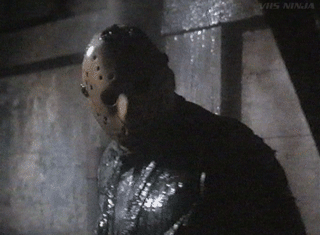
Jason hated the lake, but he hated the idea of you wandering around alone at night more, so when you announced that you were going to go stargazing on the dock, he insisted on joining you. But now that you were actually there, you could tell he was starting to regret his decision a little. The sounds of chirping insects and the gentle lapping of the lake were almost enough to lull you to sleep. Jason, by contrast, was as stiff as the boards he lay on.
Your heart gave a painful little squeeze. You hated seeing him so unhappy. You almost wanted to tell him to head back to the cabin, but were afraid he’d think you didn’t want his company. Instead, you reached over and took his hand.
“See those three stars?” you said, pointing with your other hand. “The ones in a straight line? That’s Orion’s belt. He was a mighty hunter. So mighty that the gods put him in the sky to live forever after he died on Earth.” You felt Jason relax, just a little. Encouraged, you pointed to a bright star near the Belt. “And that’s Sirius, his dog.”
You pointed out other constellations and stars you knew: the Big and Little Dippers, the North Star, the Seven Sisters, Betelgeuse. You told him the stories behind their names, which were probably half wrong, but he’d never know or care. Soothed by the touch of your hand and the soft sound of your voice, the tension slowly seeped out of Jason’s body until all thoughts of drowning were replaced by the stars, and you.
Maybe the lake wasn’t so bad after all.
Asa Emory
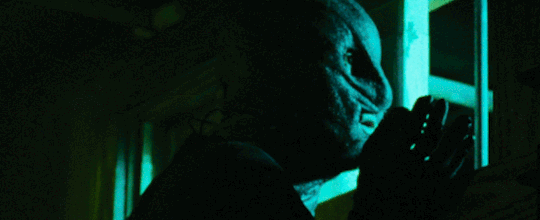
Asa wasn’t doing a lot of things right now. He wasn’t letting the dogs spend extra time out of their kennel because the brush of their noses against your hands made you smile. He wasn’t thinking about how cute the way your furrowed your brow in concentration was as you pored over star charts and fiddled with lens focus dials. And he definitely wasn’t admiring how great your ass looked in those jeans.
Nope. Definitely wasn’t doing that.
He’d bought you the telescope on a whim, which in Asa’s world meant after weeks of research instead of months. You were something of an amateur astronomer; the intricate mathematics of orbits and light refraction escaped you, but you’d always loved the stars. Childhood trips to the planetarium, camping trips in the mountains, an epic road trip once to view a solar eclipse. The sky was your happy place. Asa was your happy place, too, but he wasn’t always around. The stars were, every night without fail.
You’d lit up like the sun when he’d set the heavy box in front of you with zero comment or explanation. You’d squealed and thrown your arms around him, and if you’d been looking at his eyes, you’d have seen something that almost looked like tenderness.
Now you were set up in Asa’s backyard, searching for Jupiter. It was trickier than you expected - there was a lot of sky - but excitement tempered your frustration. You had read the telescope’s user manual cover to cover - twice - and pulled up maps of the night sky from no fewer than four different sites. You never half-assed things you cared about, a trait that Asa both understood and admired.
“Asa!” you shrieked. “Asa, I’ve found it! You’ve gotta see this!” You’re practically bouncing with excitement as he peers through the eyepiece. “Do you see that little dot near the middle? That’s Io, one of the moons.” Asa nods, stepping back and allowing you to resume your admiration of the distant planet. As you continue to gush over the cloud bands, the Great Red Spot, the tiny moons, a faint smile appears on his lips. Perhaps he’ll start acting on his whims more frequently in the future.
Thomas Hewitt

“Mama? D’you think Thomas and I could have the night off tomorrow? There’s gonna be a meteor shower and I wanna show him.” You and Luda Mae are working through a mountain of dishes side by side at the kitchen sink.
“How’d you know it’s gonna happen tomorrow?” Luda Mae asks.
“It comes every year around this time,” you reply. “My daddy and I used to watch it every summer when I was little. I just thought Tommy might like to see it.” Luda Mae’s face softens. Playing on her motherly tendencies does that.
“Well, ain’t that sweet. Course you can, dear.” She shakes a wooden spoon at you. “And don’t let Tommy give you no for an answer. That boy works too hard as it is.”
-
The Texas heat is a lot more bearable when the sun is down. You and Thomas are propped up on the rusty hood of one of the wrecked cars that dot the lawn. He’d been confused when you pulled him towards the front door after dinner, but a sharp look from Luda Mae quelled any protest he might have made.
“Look!” You grab Thomas’s arm as a thin streak of white flashes across the sky. More and more meteors fill the sky, until they’re coming nearly every minute. You ooh and aah over the brighter ones, oblivious to the fact that your hand is still gripping Thomas’s arm.
Thomas, on the other hand, is very aware of your warm skin on his.
“This was always my favorite part of the year,” you sigh after a particularly bright meteor. “I always wished on shooting stars and there’s so many of them now, I figure if I wished for the same thing on each one, at least one of them’s gotta work, you know?” You glance over at Thomas and are once again struck breathless, this time by the intensity in his blue eyes. Your cheeks heat and you return your gaze to the sky, moving your hand away from his arm.
An hour or more passes, the silence between growing thicker with each minute. You’re beginning to wonder if you made a mistake, if Thomas really didn’t want to be here with you.
A large, tentative hand brushes your cheek with aching tenderness, turning your face back to Thomas. He seems to be steeling himself for something, and before you can ask what’s wrong, he leans over and brushes his lips against yours. The kiss is chaste, but it sets your heart racing, and when you lay a hand on Thomas’s chest, you can feel his galloping along as well. It’s an eternity and an instant before he pulls back, slowly.
“Wow,” you whisper with a smile as bright as a shooting star. “It came true.”
#bo sinclair#house of wax#jason voorhees#friday the 13th#asa emory#the collector#thomas hewitt#texas chainsaw massacre#my writing
314 notes
·
View notes
Note
hi tina 💞 not sure how easy this is, since my astrophysics knowledge is nearing -273 *C, but you could do mutuals as astronomical sights? comets, planets, galaxies etc... sorry if not!! 💖✨

anna! and anon! you’ve given me a wonderful chance to ramble about space. you may come to regret it, however...
if i’ve forgotten you, please do not take it personally! i didn’t mean to. my mind is just but a glorified puddle :)
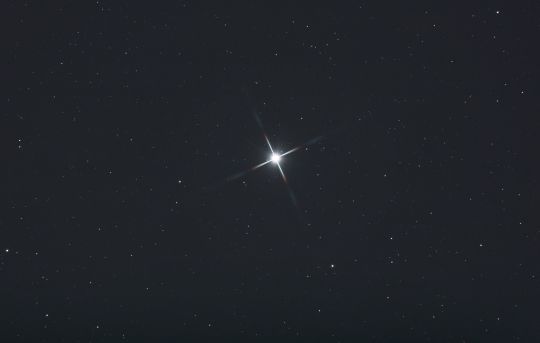
@archaicmusings — vega
vega is the brightest star in the constellation lyra, and happens to be my favourite star. don’t ask me why vega is my favourite star, or why lyra is my favourite constellation, because i haven’t got a coherent answer for you. i’ve just always been drawn to them. a bit like cal, really. i feel like we’ve known each other for far longer than just four months, and she’s so lovely that i’m fairly sure i could say anything to her and she’d just accept me for whatever rubbish i’m rambling about this time. and, in the depressing year that’s been 2020, cal has been a bright star.
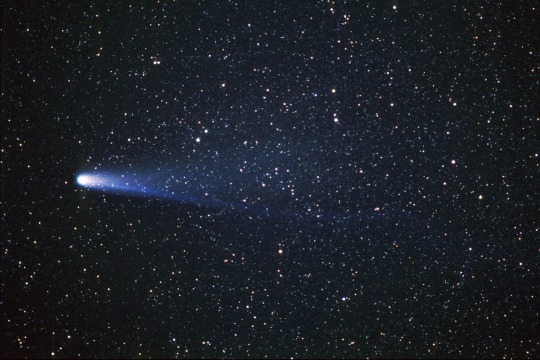
@drivenbybri — halley’s comet
honestly, is there anything more iconic than halley’s comet? there can’t be much. probably the best known comet of all time, halley’s comet is a short-period comet (and if you’ve read starstruck, you know how much i prefer short-period comets to those long-period comets with their damned 200-year perihelions, even if certain people suggest that this makes them quite special), meaning that it is visible from earth every 75-ish years. halley’s comet last made an appearance in the lovely year of 1986, and will thus appear next in 2061 (i’m so excited for my 59-year-old self!!!). halley’s comet, though well-known, is still a rare breed, so to speak. it is rare, and extraordinarily beautiful that a comet appears to a human twice within their lifetime. sofie is rare, just like halley’s comet, and equally beautiful, both in heart and with that lovely curly hair of hers. i’m honoured to know her, just as i shall be honoured to see halley’s comet one day.
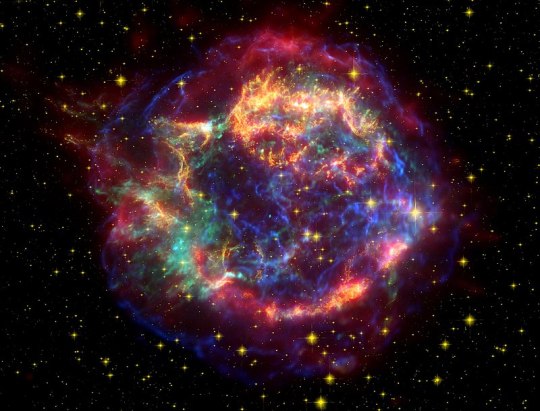
@brianmays-hair — cassiopeia a
cassiopeia a (or rather, the remnant of cassiopeia a) was a supernova within the constellation of cassiopeia. for those of you who do not obsess over interstellar matter the way that i do, supernovae are explosions of massive stars, or white dwarfs drawn to nuclear fusion, within their final stages of life. not much is known about how these explosions necessarily take place, and nasa has only caught on video one such explosion, back in 2016. the most commonly presented image of the remnant of cassiopeia a is a false-colour image, composed with three different wavebands of light. it is, as you can see, very beautiful. supernovae radiate energy and light throughout the cosmos during their existence, and thus having a great effect on the space surrounding them. i therefore liken jess to cassiopeia a because she has a brilliant personality, vibrant and inspiring, which comes across especially in her writing. but of course, the beauty of cassiopeia a has nothing on her.

@deacyblues — sirius
as far as we humans and the scientists among us know, sirius is the brightest star in the observable universe. housed within the constellation of canis major, sirius has always been monumentally important in terms of navigation, since ancient times. i tell pearl this all the time, but truly, i mean it; her outlook on life is inspiring, how she never fails to be positive even in times of great trouble. like sirius, pearl is a light, ever-present within the mindset of living for today, ever-determined, and unfailingly kind.
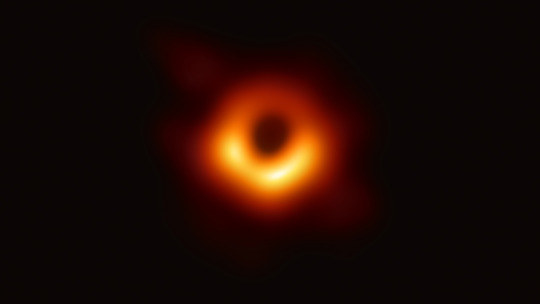
@joemazzmatazz — black hole
please let me explain before this gets taken the wrong way: I LOVE BLACK HOLES. i specifically want to study black holes, whenever i get the chance to specialise within astrophysics. they fascinate me to no end, with a kind of allure that only the mysterious can hold. furthermore, black holes may be the key to understanding the universe; if we understand black holes, we will be able to make headway on other matter, such as dark matter, and dark energy, the latter of which makes up the majority of the observable universe, and will lead us to astronomical (if you’ll pardon the ill-worded expression, and the unintentional pun) conclusions concerning both the beginning of our universe, and the eventual end. regan, just like a black hole, is a wealth of information, especially concerning the knowledge she harbours about disney, and the business management sector of it. it’s quite truly inspirational.
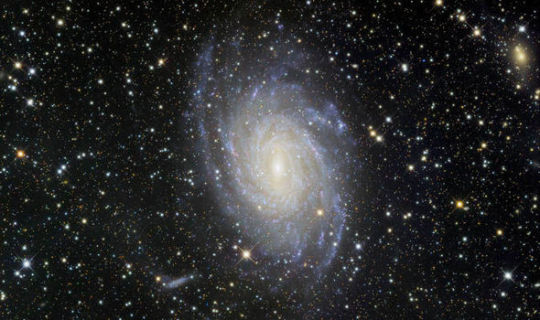
@im-an-adult-ish — the milky way
ah yes, the milky way. home to all of us. and that is the essence of my explanation here. meredith has such a friendly way about her, and she’s the kind of person you can easily turn to and feel welcomed. a bit like our little corner of the universe <3

@almightygwil — the sun
i think this is probably self-explanatory, if a bit repetitive, but ellie is a ray of sunshine. but perhaps that sells her a little short, because ellie is just so genuinely lovely that she must herself be the sun. her writing talent astounds me (you could say it blinds me, ha ha), and she never fails to be somehow both sweet and very chaotic at the same time. it’s very admirable (and certainly relatable, on the chaotic front). the sun itself, if we think about the surface and the fusion that takes place there, is both the sweetest sight ever seen, and quite chaotic, so i think it fitting that ellie is the sun.
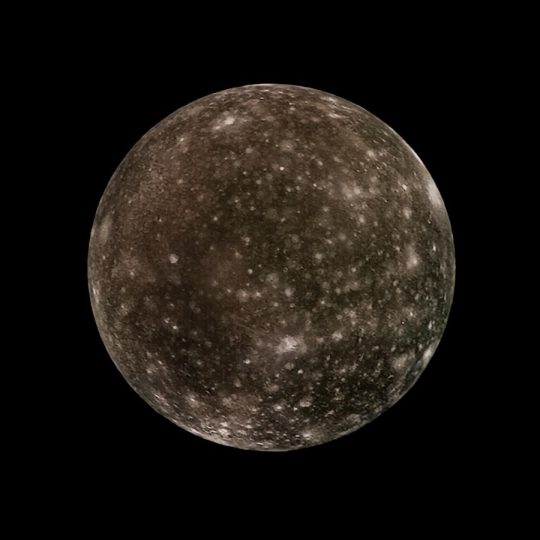
@hijackmy-heart — callisto
callisto is one of jupiter’s moons, and my favourite, because it looks like a piece of the night sky decided to curl up into a ball. i don’t know nat too well, but i know that she’s gorgeous, like callisto, and loves roger taylor. let me explain. jupiter, in roman mythology, is the god of the sky and of thunder. in norse mythology, thor is the equivalent of jupiter, and to me, roger has always had a bit of that typical scandinavian look going, with the blonde hair and blue eyes (not to say that all scandis look like this, but he fits the stereotype :)). nat loves roger, and callisto orbits jupiter, so there you have it.

@six-bloodyminutes — the moon
the moon has a serenity about it, and mo has a knack for telling quite wild things with a most casual air. for instance, according to my sources, when a certain dorm room caught fire (?). mo thus bears this serenity, akin to the serenity i associate with the moon, with equal grace and chaos.
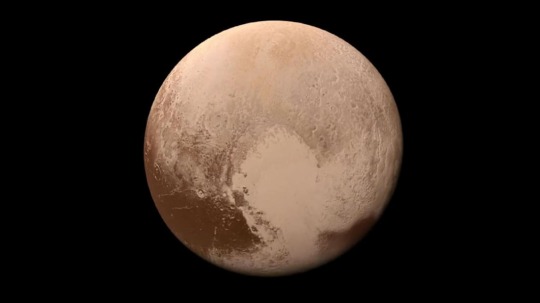
@dancingdiscofloof — pluto
pluto! the not-planet-oh-wait-maybe-it’s-a-planet-jk-jk-unless..? i still think that pluto should be considered a planet, despite the many arguments against the poor sod. pluto was once a planet, and should therefore have remained a planet, for the plain and simple fact that taking away its planethood was like giving a person a present, and then taking it back immediately afterward. anyway. i’m rambling. i also do not know rove very well, but i know that she’s kind, and, judging by the memes she shares, both of ryan gosling and tom hanks, that she is quirky— a bit like our beloved pluto.
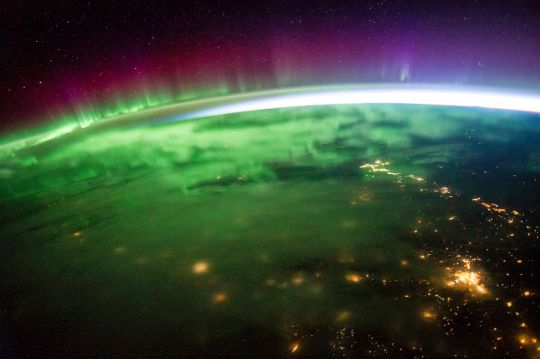
@imcompletelylost — aurora borealis/aurora australis
also known as the northern lights/the southern lights, the polar lights, the merry dancers, the fox fires, or swarms of luminous herring (you can thank my ancestors, followers of norse mythology, for that one), the aurora is an astronomical phenomenon precipitated by the complete ring of light surrounding the poles, “which at its brightest has a distinctively green tint” (may, brian, et al. the cosmic tourist. carlton books, 2016.). yes i just made a citation from one of brian’s books. don’t worry about it. anyway, particles emitted from our sun are caught by the magnetic fields of earth’s poles, and thus produce this ethereal effect. but you know what the aurora has always reminded me of? disco lights. and libby is noting if not the queen of disco. oh, and, libby’s makeup talents? the aurora could never.
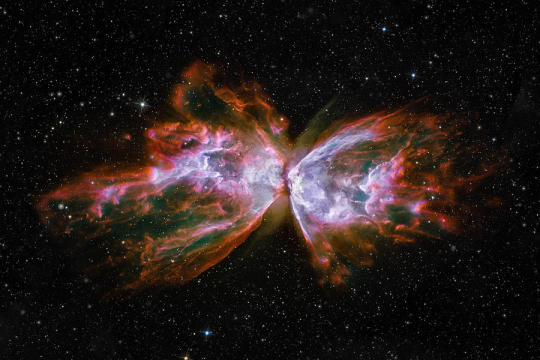
@aprilaady — butterfly nebula
the butterfly nebula is incredibly beautiful. but also, depending on from which angle it is beheld, it looks quite different. dor will surprise you, in the loveliest way possible (and sometimes the funniest) with a kind word or a joke, or even just a relatable comment. she has so many talents, being rivetingly smart within so many fields, especially the sciences, and in this, conveys multitudes, like the butterfly nebula. one might say her soul is painted like the wings of butterflies...
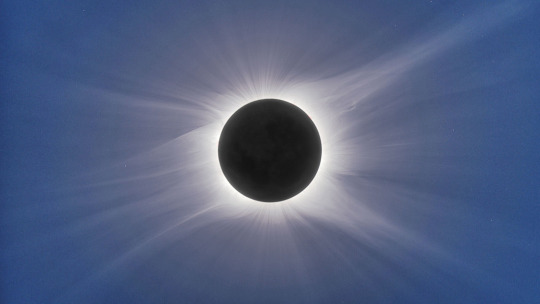
@doing-albri — solar eclipse
the alignment of the sun, moon, and earth. difficult to see, especially in totality, if you continually live in the same place. but there’s something magical in that alignment, i think. something quite poetic. it’s partially in the name ‘eclipse’ and partially in the nickname— a “ring of fire.” i saw the solar eclipse in august of 2018, and looking up at it, i was quite awestruck. you’re not supposed to stare directly at solar eclipses, because despite the moon overshadowing the sun, you can still damage your eyes significantly by looking at them. vi is so bright, both in her attitude and in her intelligence, and thus i’ve chosen the solar eclipse for her. also, when a solar eclipse occurs, using a piece of cardboard with a hole (or generally any thick-radius circular object with an opening), you can recreate the phenomenon on another surface, resulting in beautiful patterns and light-art, which i think speaks to vi’s eye for aesthetics.
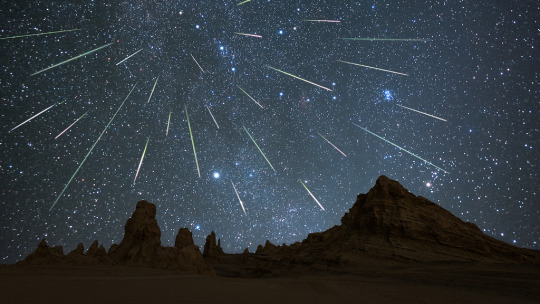
@imalososos — meteor shower
meteor showers are perhaps some of the most beautiful phenomena i have ever seen. back in the summer of 2016, i stayed up all night to watch the perseids rush across the sky, and i was not disappointed, by any means. within the early hours of the 12th of august, an estimated 80 meteors darted across the heavens each hour. meteors, in essence, are clusters of mineral, usually debris from comets, which enter the atmosphere of a planet, and thus seem to shoot across the sky. now, you may be wondering, what’s the bloody blooming difference between meteoroids, meteors, and meteorites, and why are we talking about meteors in particular? well, meteoroids are cosmic debris that have not yet entered an atmosphere; as soon as a piece of cosmic debris enters a planet’s atmosphere, it is classified as a meteor. as for meteorites, nothing is a meteorite unless it strikes the ground. anyway. you didn’t come here for my science ramblings. meteors are also called ‘shooting stars,’ and let’s be honest, they’re space’s idea of art. streaks of light across the sky? sounds like a painting to me, and darya, among many other things, is an artist— and a brilliant one, at that. so i think it very fitting to describe her as the art of the universe <3
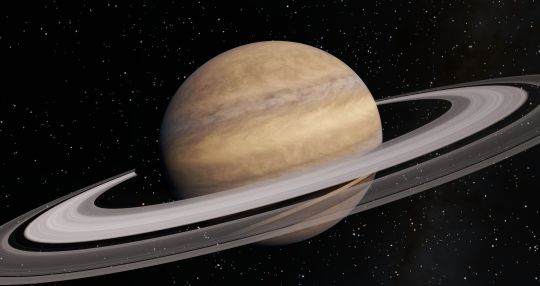
@mazzell-ro — saturn
i! love! saturn!!! being the only planet in our solar system with highly visible rings, it just stands out to me. it’s absolutely gorgeous, and an object of much inspiration to me, when i was little and decided that space was absolutely something i wanted to see. i could write an eight-verse song about saturn, i love it so much, and honestly, i think ro could write one too; she’s an excellent musician. but aside from its lovely rings, saturn is unique because its composition, in the ratio of its gases, would allow the planet to float in water. ro is uniquely wonderful, and her writing!!!!!!!! makes me so soft and happy and makes me want to give her the word. quite how i feel when i look up at saturn.
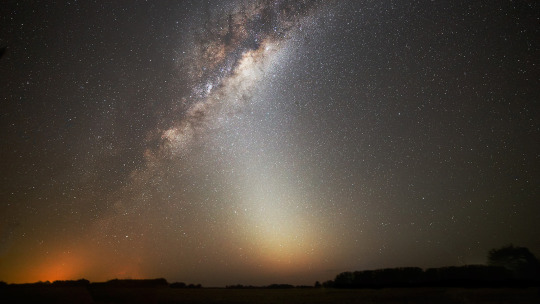
@mistiermistshazierdays — zodiacal light
you may recognise this term as brian’s speciality from when he was studying astrophysics. but what is it? zodiacal light is that strange triangle of light that appears glowing in the sky after twilight and before dawn, and is the subject of much earth-based astrophotography. extraordinarily beautiful, scientists are still not entirely sure what the phenomenon is, but most research and practical experiments are in favour of zodiacal light being sunlight reflected off of cosmic dust (also known as stardust!). now, if my knowledge of ancient greece and its mythology serves me, the name phoebe comes from phoebus, and (thank you google) means ‘bright.’ zodical light… bright… phoebe… you might say it’s a match made in the heavens. quite literally if we’re talking space. phoebe, you kind soul, you are stardust.

@speciallyred — andromeda galaxy
and last, but certainly not least, dear anna. i name thee the andromeda galaxy, partially for your own name, and partially for its poetic beauty. andromeda, the neighbour galaxy of our deal ol’ milky way, is actually about 2.5 million lightyears (15 trillion miles, 22.5 trillion km) away from us, here on earth. call me vain for the number of times i’ve described the beauty of space throughout this rather extended exposition, but andromeda is startlingly beautiful. one reason for this objective beauty is that andromeda is estimated to be home to roughly double the number of stars within our own galaxy. anna is one of the most talented poets i have ever come across, hands down, and what be the food of poetry, if not the stars?
33 notes
·
View notes
Text
The World of Thera

This is the first upload I will be doing for all of the work I did for my senior show centering around my own stories and characters. If you would like to view the entire exhibition now, click this link! It includes a number of short stories, illustrations, and character bios for your viewing pleasure!
(now back to the story)
In the very beginning...
Thera lay a lone planet in a dead part of space with no neighboring moons or stars and only faint glimpses from other galaxies could be seen in the far distance. The only hint of life on Thera’s surface was a swirling sea of energy, a force that would later be labeled as magic. Magic existed on Thera as a form of unpredictable energy that resided within all matter on Thera and the celestial bodies that would eventually surround it. It was an unrelenting force that was always looking for a purpose, and after millennia of searching endlessly for a vessel, an unknown spark suddenly created one; life. This spark created the first two beings to ever exist on Thera, two sister spirits who would later be named Lun and Liy. All magic that had been swirling restlessly on Thera’s surface divided itself into these two vessels. It was Lun and Liy, the first nature spirits, that would shape what Thera would become. Lun first created earth for her and her sister to stand on, and then water to fill the world with expansive oceans. Liy created air, forming an atmosphere around Thera, and then fire to bring heat and light to the cold and dark world. These first sparks allowed for life to begin forming on Thera, and for many thousands of years Lun and Liy watched life grow around them. Eventually their lifespans became so long that they ascended into godhood. Lun and Liy both left Thera and took their places in the sky, Lun becoming the moon and Liy the Sun. They now exist in a state outside of consciousness, orbiting around the planet they helped populate with life. Thera is a planet existing within a geocentric solar system. The closest celestial bodies are a large moon and a star orbiting the planet at the same speed Thera rotates. This resulted in extreme poles dominated by the light of the moon and sun, and an equator with a mix of both lights known as Middle Thera.
General Notes
Magic
Magic: Magic on Thera comes from the energy emanating from the moon and the sun (Lun and Liy). The points of Thera that are closest to these lights have the most potent magic and the creatures with the strongest connection to it. Moon-aligned magic: Magic that comes from Lun is mostly associated with healing and change, like illusions, shapeshifting, aura-sensing, mending wounds etc. Sun-aligned magic: Magic that comes from Liy is associated with vitality and power, like growth spells, animating matter (golems, telekinesis), concussive blasts etc.
Day and Night
Day and night looks different for each part of Thera, and comes when Lun and Liy’s light dims after a 12 hour day, lulling the world into sleep as they too rest for the night.
Moon Pole: Night at the moon pole is pitch back, day appears like an enhanced full moon’s night on Earth, still quite dark compared to a regular earth day, but brighter than the typical night.
Sun Pole: Night at the Sun pole appears more like dusk, never quite getting as dark as night on Earth. Day at the Sun pole is incredibly bright and full of sunlight.
Middle Thera: Night on Middle Thera looks more like late Evening on Earth, and day more appearing like early morning, never getting quite as bright at the Sun pole, or dark as the Moon pole.
Culture
Faith: Religion is largely absent on Thera, people instead following different schools of philosophy influenced by their culture and personal experience. What unifies almost all people on Thera is a strong faith in magic and the belief that they are part of nature, not separate from it. It is widely accepted that everyone’s greater purpose is to maintain harmony on Thera, uplifting those around as a way to help yourself in turn. Whether it be through nature, relationships, or your wider community.
Society: People for the most part live in tight knit communities that share resources. There is very little concept of borders, so groups of people are defined by culture rather than sectioned pieces of land. Small communities will often be led by an elected leader or council of respected peers. Larger cities are often led by a matriarch or queen who serves a term anywhere from 10 to 50 years depending on what age they were elected. Leaders being chosen by the previous ruler with permission of the people. Women are most often chosen for this position as they are seen as being made in the image of Lun and Liy, and therefore more connected to their magic.
The Moon Pole
This part of Thera is the least populated by people and is more known as the home of a plethora of strange creatures. Lun is often referred to as the “Mother of Monsters” as the moon’s light is responsible for creating many beings considered strange and dangerous by the citizens of the Sun pole and Middle Thera.
Environment: The moon pole stays between 50 - 70 degrees in most areas, extreme cold only existing in a few parts. It consists of wetlands, tundras, and beaches. People that live on this pole rely heavily on the sea for sustenance as vegetation and animal life are a little sparse on the surface.
Moonlit Desert: The moonlit desert is a wide expanse of land with almost no vegetation and sparse signs of life. It’s sand is finer than stardust and its soft sparkling dunes lull travelers into a false sense of security. This land is dangerous to those unfamiliar with this strange environment, so be careful to prepare before crossing, and employ a guide if you would like to see the other side.
Lunar Sea: The sea that surrounds the lands that populate the Moon pole, the depths of which house many large and dangerous creatures. It’s more shallow waters are home to a great many edible fish for the experienced fisherman willing to catch them.
Middle Thera
This part is by far the most populated area of Thera, a melting pot of people from all over. It is the most diverse mix of people, creatures, and magic. It also has the widest temperature range, going from very cold to temperate depending on the area.
Environment: It is mostly covered by mountains, forests, grasslands, and prairies. Agriculture is the most established here and creates the widest variety of products for export to the poles.
The Sun Pole
This part of Thera is not quite as populated as Middle Thera, but is home to a good variety of citizens that have made the sun pole their home.
Environment: The sun pole is very warm having extreme dry and wet environments. It mostly consists of humid rainforests, swamps, and savannas.
#I'm finally gonna introduce my actual ocs lmao#you ever have characters who you have had for years and are your favorite to think about#but just.....never drew them for some reason#well that's these guys#ALSO YAY MY SENIOR EXHIBITION IS DONE#I"M FREEEE#kind of#still gotta finish other class finals#BUT AFTER THAT IM FREEEE#and I can draw princess luna again with no guilt for assignments#hell yeah lads
11 notes
·
View notes
Text
TAFAKKUR: Part 424
THE SUN
SURELY EVERY PERSON AT SOME TIME LOOKS UP AT THE SUN AND MOON AND THE BRILLIANT STARS AND ASKS, WHO POSITIONED ALL THESE SO PERFECTLY ON THE FACE OF THE SKY’?
People have always marvelled at the stars and planets. But they have not always realized that there is a harmony in their positions and movements, a law and order, as indeed in the whole universe. For example, seen from the perspective of the ancient Greek astronomers, celestial bodies in the universe are aimless objects. That seems to be the implication of the term ‘planet’ which means ‘wandering’. The Greeks may have thought the ‘wandering stars’ or ‘planets’ moved in unstable orbits, more or less randomly.
The ancient astronomers’ judgement was not founded upon the Oneness of the Creator Who orders everything in the universe. Inevitably they did not have a clear grasp of the orderliness of the macro-cosmos and did not seek it.
The Qur’an revealed many centuries ago that it is Allah who created the heavenly bodies and put them into their peculiar orbits. There is nothing in the Islamic teachings that argues the view that phenomena or events are random.
Do they not look at the sky above them, how We have built it and adorned , and there are no flaws in it. (50.6)
We have built above you seven strong (heavens) and placed therein a blazing lamp. (78.12)
The ‘blazing lamp’ referred to is the sun.
People have always been fascinated by the thousands of gleaming lights sprinkled across the night sky. Today many enjoy looking into the heavens and learning about the patterns and positions of the stars, and discovering what stars can tell us about our universe as a whole. From our planet, if very high buildings and city lights permit, we can see about 6,000 stars with the naked eye. They change in colour, size, and brilliance.
We are near enough to one particular star, the sun, to find out many details about what these celestial bodies are made of and how they function. A star is composed of gases and other substances compressed together under the force of gravity. The pressure at the core of a forming star is sufficiently intense to initiate nuclear reactions that begin generating energy. During this process, matter is converted into energy, releasing large quantities of heat and light.
The sun may not catch up the moon, nor may the night outstrip the day. Each one is moving smoothly in its own orbit ( 36.40). Here an essential fact is clearly stated, namely the existence of the solar and lunar orbits. At the time of the Revelation, it was generally believed that the sun orbited a motionless earth. This, the geocentric system, had held sway from the early second century (the time of Ptolemy). It continued to do so until the sixteenth century. Fourteen centuries ago, the Qur’an directed the inhabitants of the Arabian Peninsula and, through them, all of mankind, towards the truth. The demonstration of the existence and details of the solar and lunar orbits is one of the recent achievements of modern astronomy.
Those who do not believe in One Creator maintain that everything comes about by chance. They do not realize that every creature in motion, from minute particles to the planets, displays on itself the stamp of the Eternal and of His Unity. Also, by reason of its movement, each of them, in some sense, takes possession of all the places in which it travels in the name of Unity, thus including them in the property of its Owner. As for those creatures not in motion, each of them, from plants to the fixed stars, is like a seal of Unity that shows the place in which it is situated to be the letter of its Maker. That is to say, each flower and fruit is a stamp and seal of unity that demonstrates, in the name of Unity, that its habitat and native place is the letter of its Maker. What all that inter-connectednes means is that one who does not have all the stars within his command does not have command over a single small particle either.
There are two other verses in the Qur’an about the sun and the moon and their usefulness to human beings, not only as light, but also as points of reference for space and time:
Allah subjected the night and the day for you, the sun and the moon. The stars are in subjection to His Command. Verily in this are signs for people who are wise. (16.12)
Allah is the One Who made the sun a lamp and the moon a light and ordained for it mansions, so that you might know the number of years and the reckoning (of the time).
Allah created this in truth. He explains the signs in detail for people who know (10.5)
The solar system comprises the sun and the nine planets that orbit it. The closest to the sun is the planet Mercury, at an average distance of 58 million km; the farthest, Pluto, is 5,900 million km from the sun. The closer a planet is to the sun, the shorter the time taken to complete its orbit. Thus, Mercury takes only 88 earth days to go round it, while Pluto orbits the sun only once in 248 earth years. Absolute time and distance are nowadays both measured in terms of light speed–a metre, for example, can be defined as the distance the light travels in a certain ‘space’ of time, in fact, 0.000000003335640952 seconds.
It is hard to think of the sun as a passing event. Nevertheless, its ‘term’ is fixed–the Qur’an is explicit on this point: And the sun runs its course for a period fixed for it (36.38). So, how long has the sun left to run? Astronomers nowadays calculate about 4.5 billion more years in its present state. It will still have nearly the same surface temperature (6.000 °C) and yellowish colour that it has now but it will appear about twice as bright because it will be about 60 percent bigger. Its next 4.5 billion years will have begun to take their toll on the sun’s nuclear fuel supply. What then? We don’t really know. Any calculations we make can only be made on the basis of theory.
The sun is full of gases composed of two thousand trillion tons (2x103 kg) of matter,
with the remains of other elements. For every million atoms of hydrogen there are about 85,000 helium atoms and only about 1,000 of any other kind. Pressure from all that mass compressing into the centre of the sun is high enough for the hydrogen atoms to fuse in the core to form helium. This simultaneously creates new energy which keeps the sun from collapsing further and provides the energy that allows it to (or makes it) shine. A series of nuclear fusion reactions, whose end result is the conversion of hydrogen to helium, happen on a vast scale and release very great amounts of energy in the form of heat, light, X-rays and so on. A part of this reaction must be the release of so-called neutrinos. Neutrinos are particles that interact so little with other matter that they can probably float through entire galaxies without being affected. They exist but have no mass nor any other physical property, which is like saying that they simultaneously exist and do not exist: we know they must be around by the way the movement of other (‘real’) particles is affected. If the theory about the way that the sun shines is correct, the sun should be producing about 180x1036 neutrinos each second. Obviously, only a small portion of these neutrinos will come in the earth’s direction.
The sun generates magnetic fields deep in its interior. Through mechanisms not yet fully understood, some of these fields erupt periodically through the sun’s surface, the photosphere. The high temperature and structure of the corona are produced by energy pumped from the photosphere up into the outer layer of the sun’s atmosphere along these magnetic fields.
The sun has been fusing hydrogen into helium throughout its present lifetime of 4.5 billion years, using up less than half of the available hydrogen in its core. By another 4.5 billion years, 90 percent of the available hydrogen in the core will have been converted into helium. Serious questions about the fusion rate in the sun still remain, but according to one theory, the humans of the future will face a sun that is running out of core hydrogen.
When that happens, the gas temperature and pressure will drop and the interior of the sun will collapse under the weight of the surrounding mass. The pressure in the collapsing gas will build up sufficiently for a rind of hydrogen to start burning around the core, now helium. This fusion will provide an outward force on the outermost layers of the sun, pushing them farther out than they are now. The surface of the sun will expand outward until it reaches the orbit of Venus.
Finally, this hydrogen outside the core will run out. The core of the sun will continue to contract, trying to replace the heat no longer generated by hydrogen burning. When the internal temperatures reach 100 million Kelvins, the helium (generated by the hydrogen burning) will itself start to burn. This will happen quickly, forming a carbon-rich core. Around this burned-out core, helium burning will start, and then the rind of hydrogen also will start to burn. The vast energy released by both rinds will push the sun’s outer layers further out until they reach the orbit of Jupiter. Earth will then be ‘inside’ the sun. The temperature on the surface of earth, around 6.5 billion years from now, will be around 30,000 Kelvins, and everything organic will be burned to a crisp.
Intelligent beings on earth 5 or 6 billion years from now, if any, would face the pressure to leave earth and, indeed, the solar system. They would need to have colonized planets around younger (therefore more stable) stars in order to survive. It is likely that humans in the near future will move off the earth in search of mineralogical and economic gain, whereas the future beings of our speculation will move off in order to save the species. The ageing sun will give future life a focus and a goal. And then, if we may be permitted to use the expression, a sort of Doomsday will have happened: certainly, the sun will have run to the end of its appointed (muslaqarr) time.
#allah#god#prophet#Muhammad#quran#ayah#sunnah#hadith#islam#muslim#muslimah#hijab#revert#convert#help#dua#salah#pray#prayer#welcome to islam#how to convert to islam#new convert#new muslim#new revert#religion#reminder#islam help#muslim help#revert help#convert help
1 note
·
View note